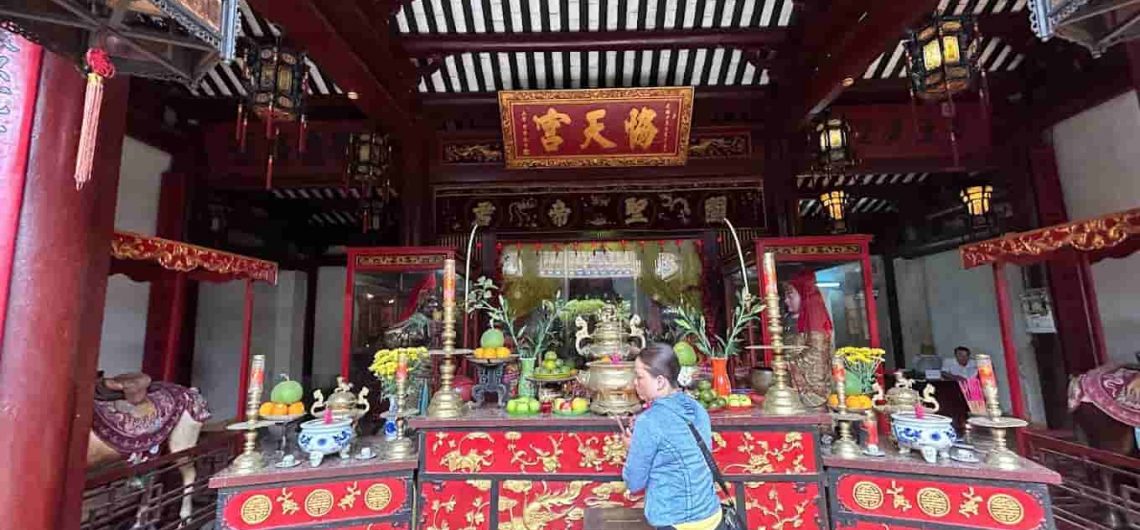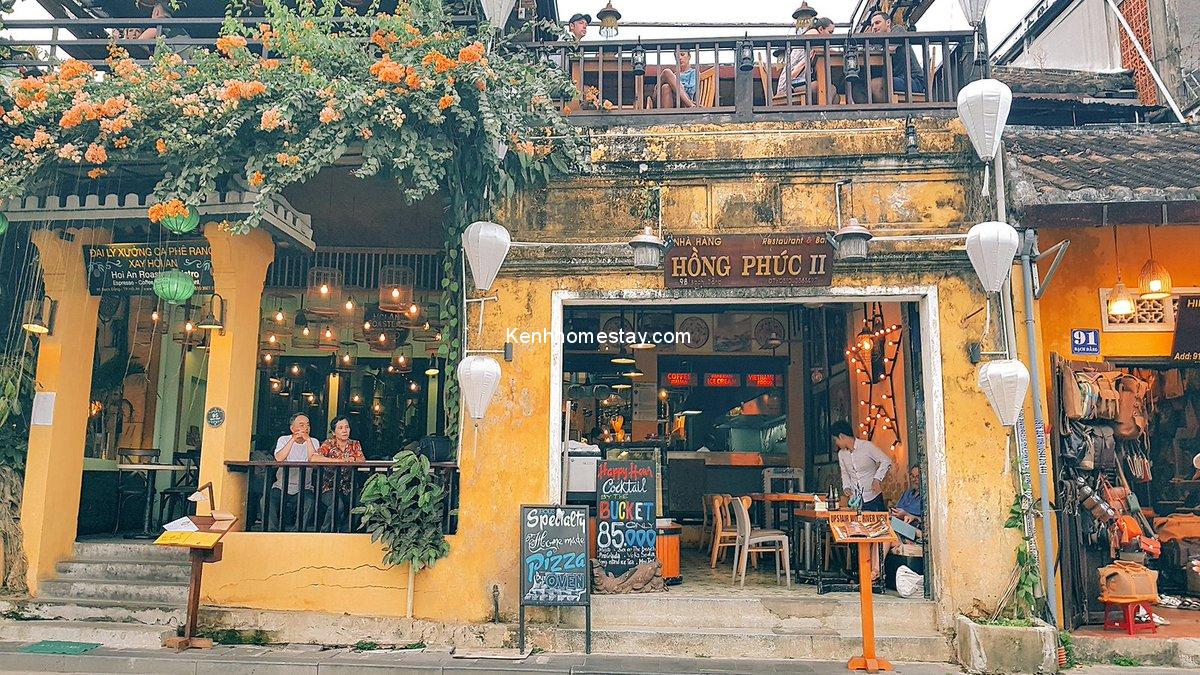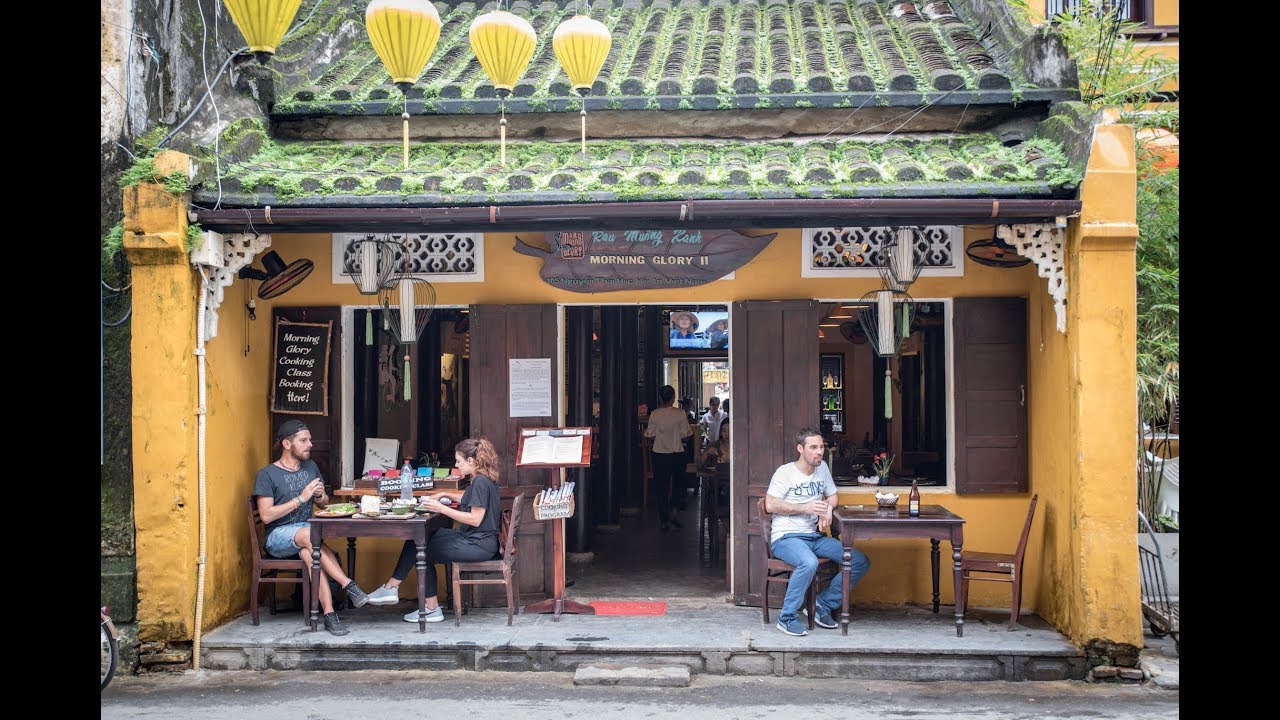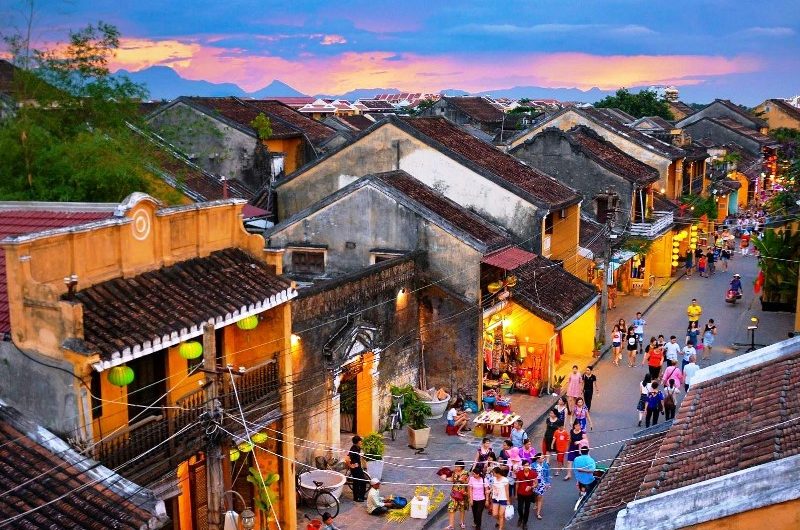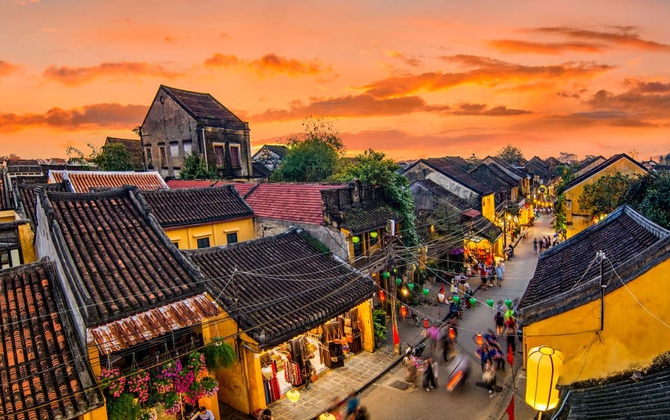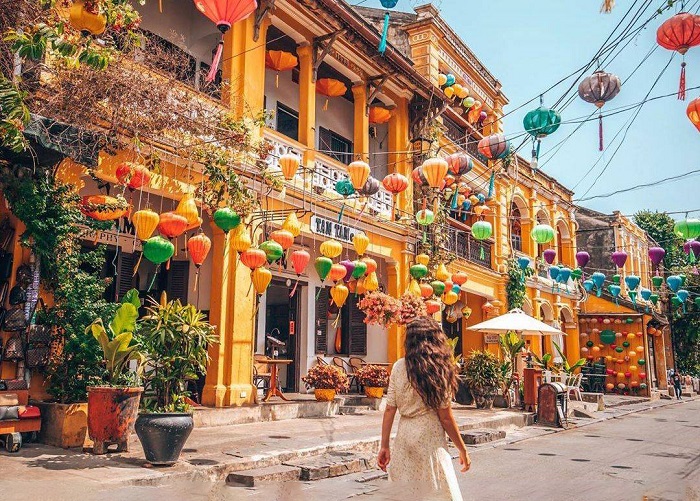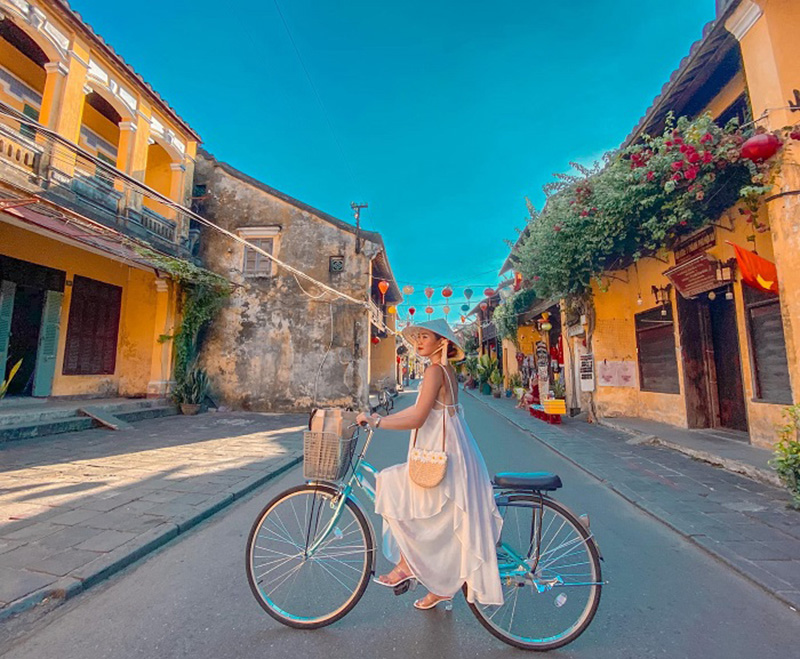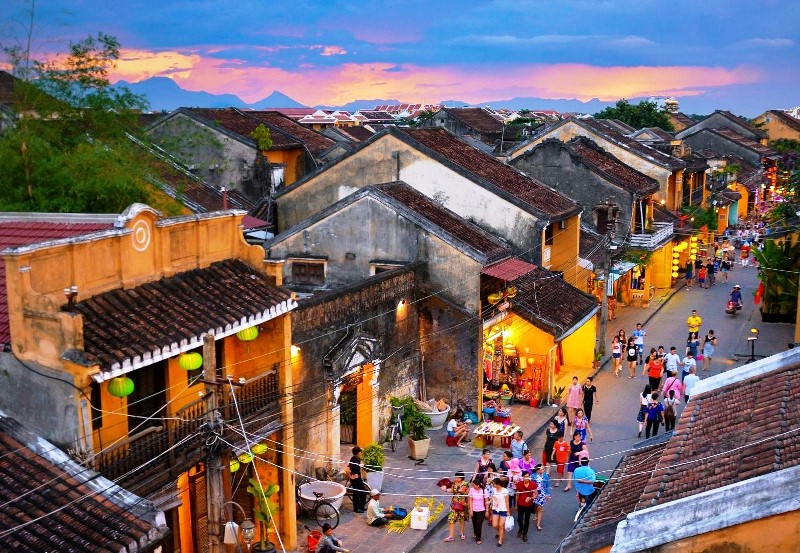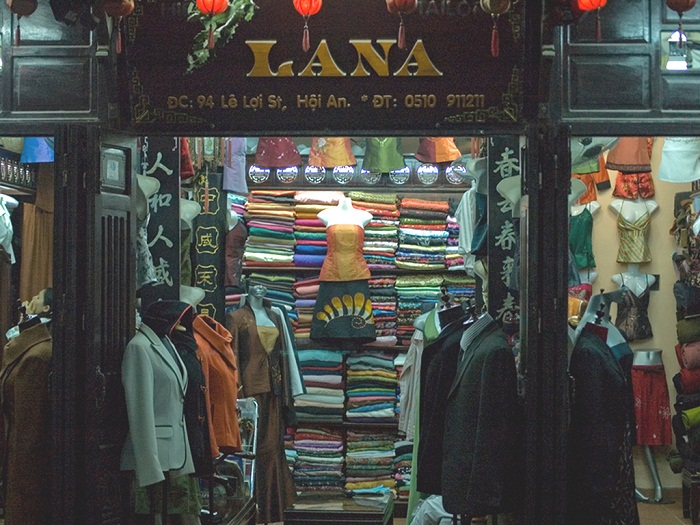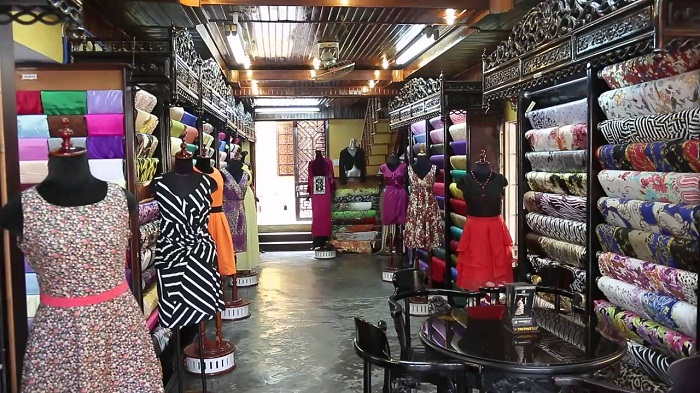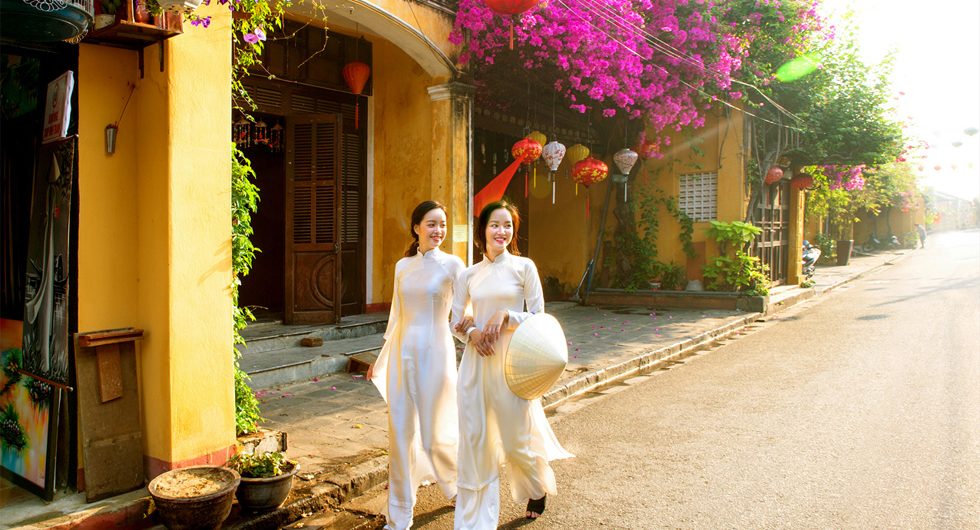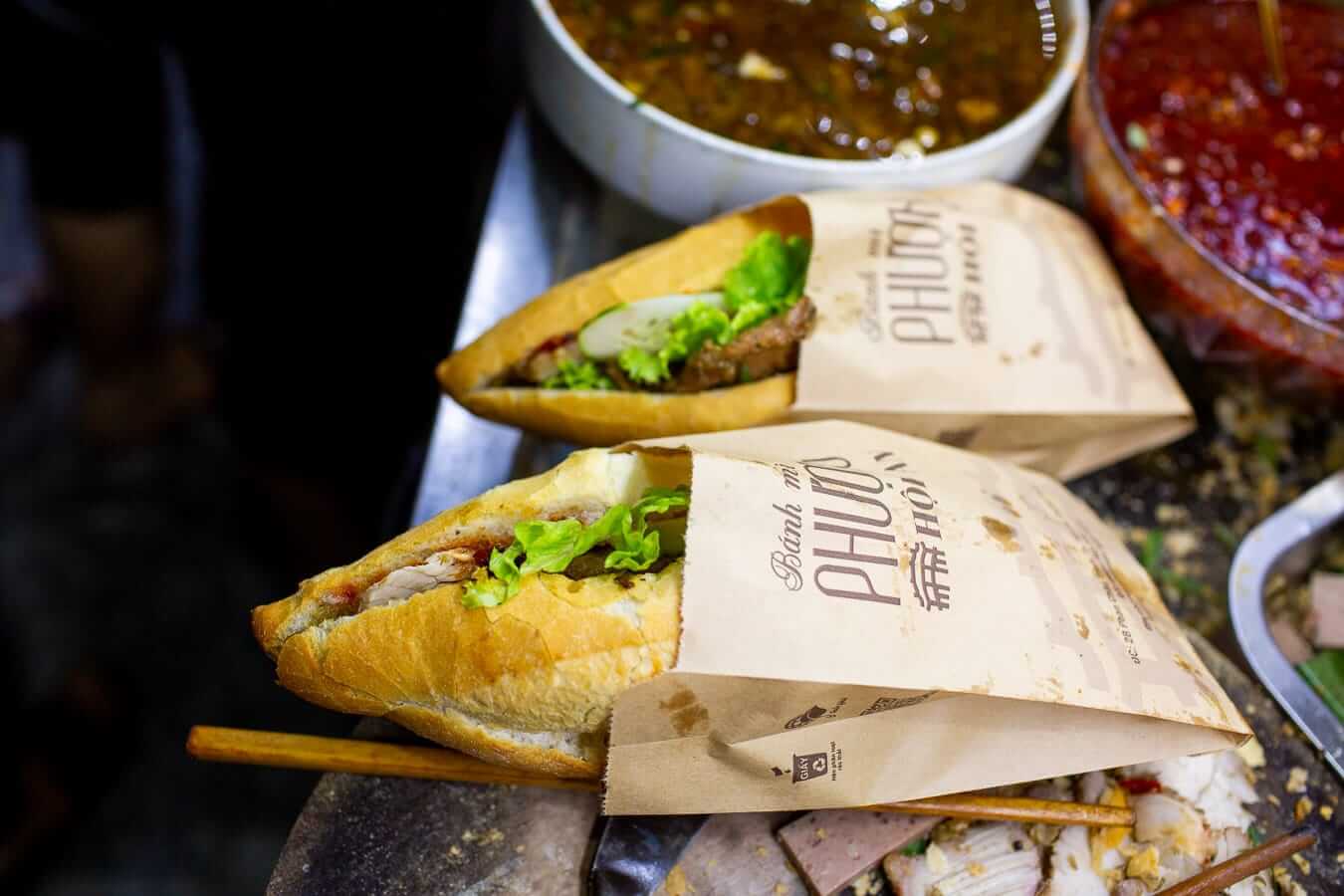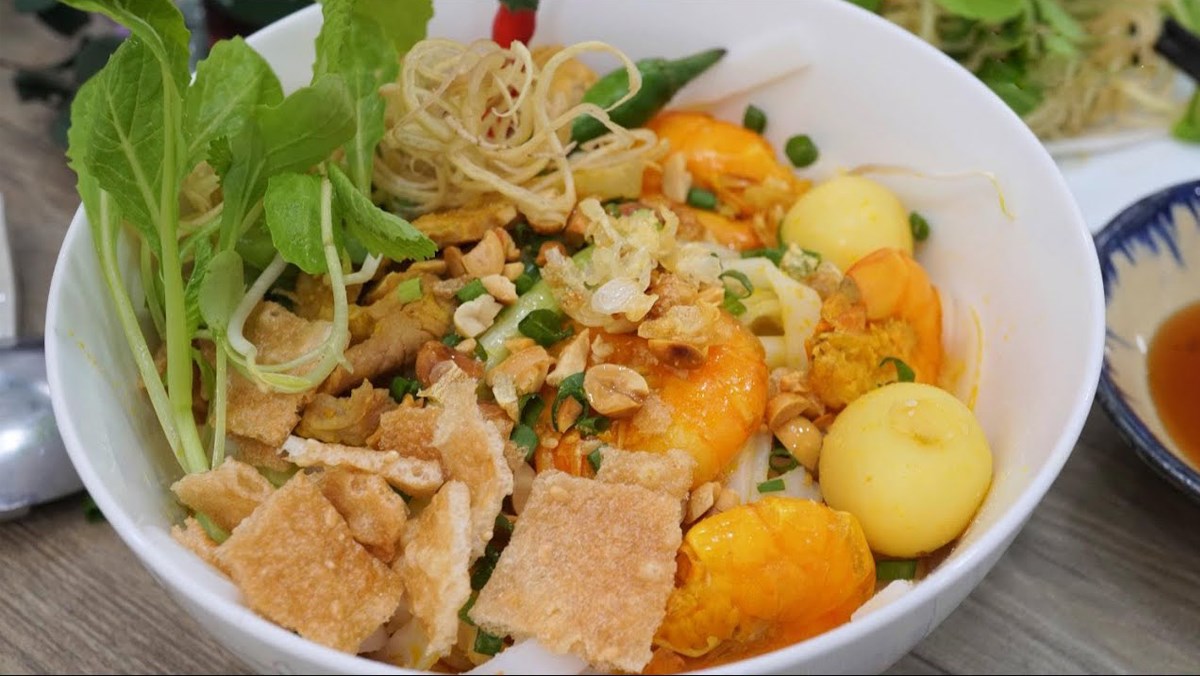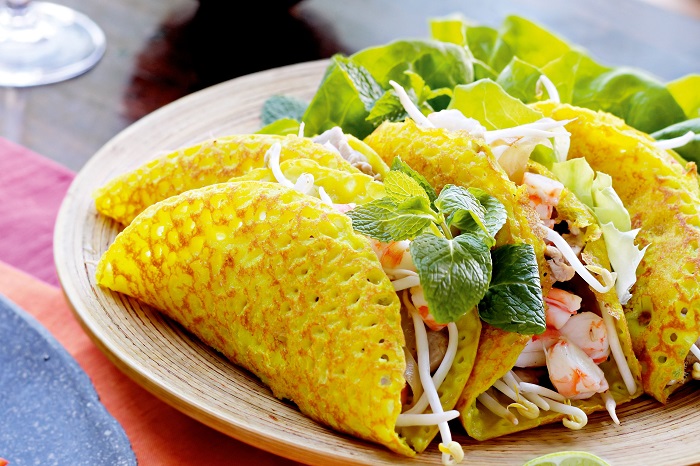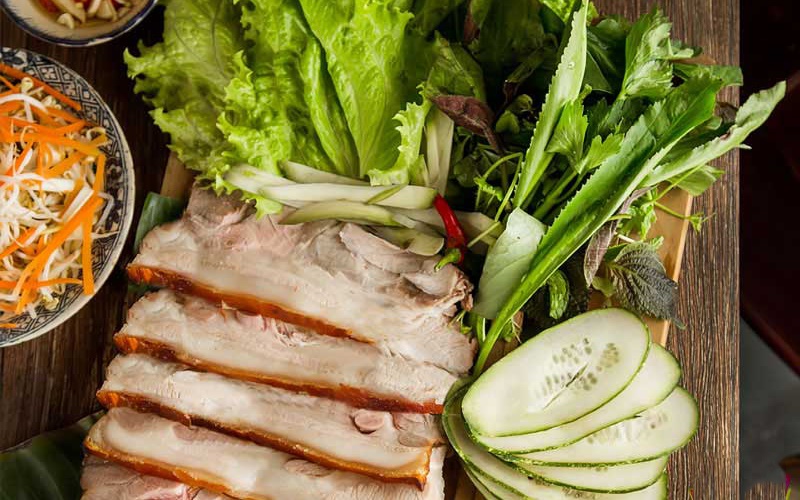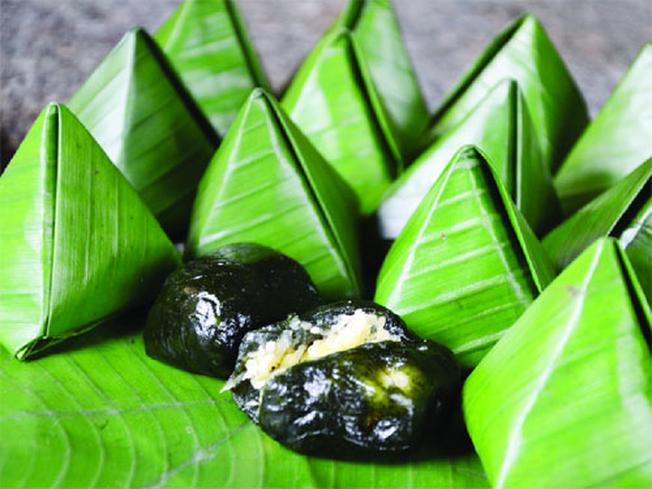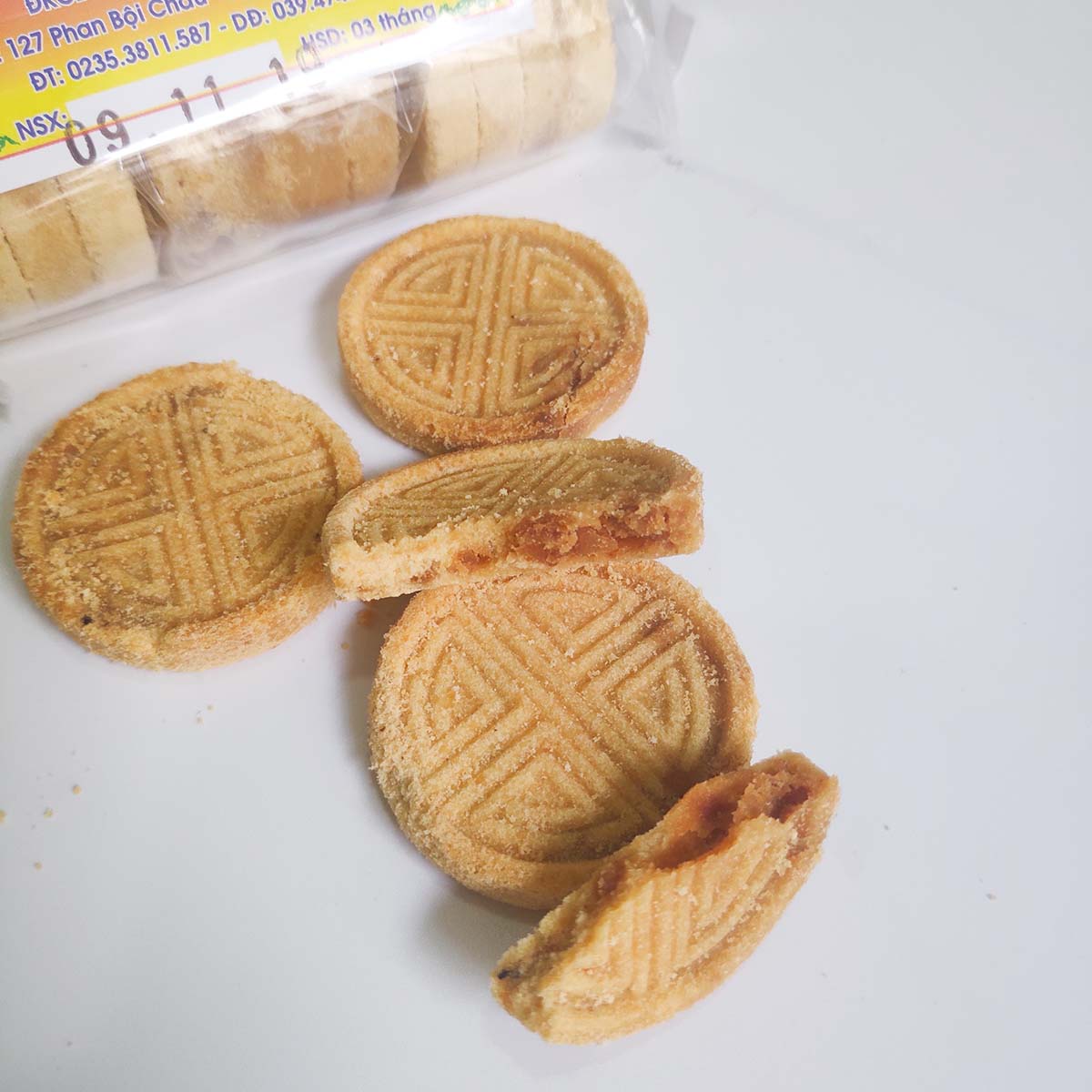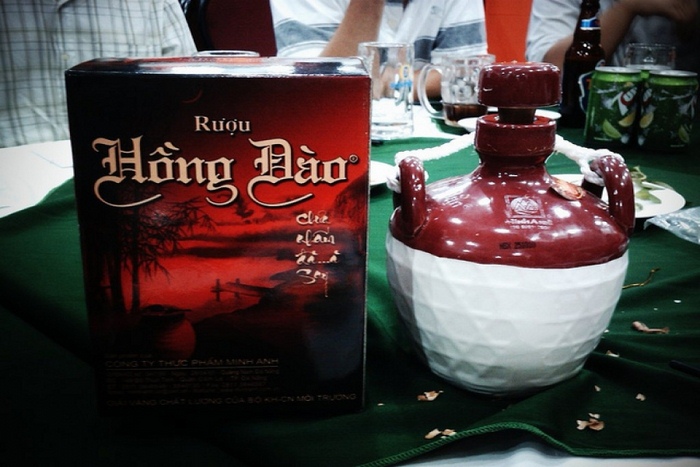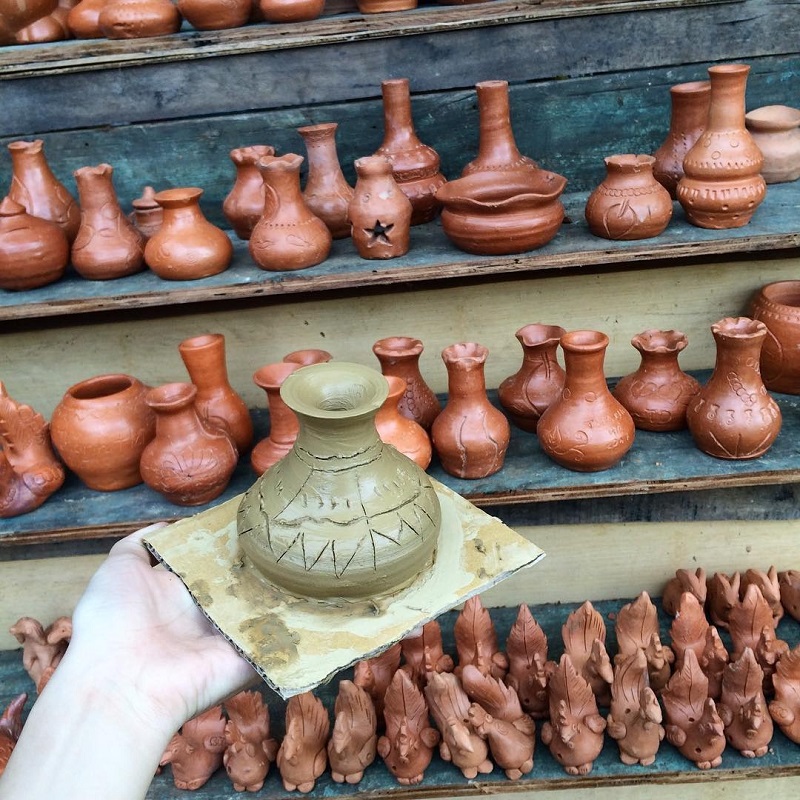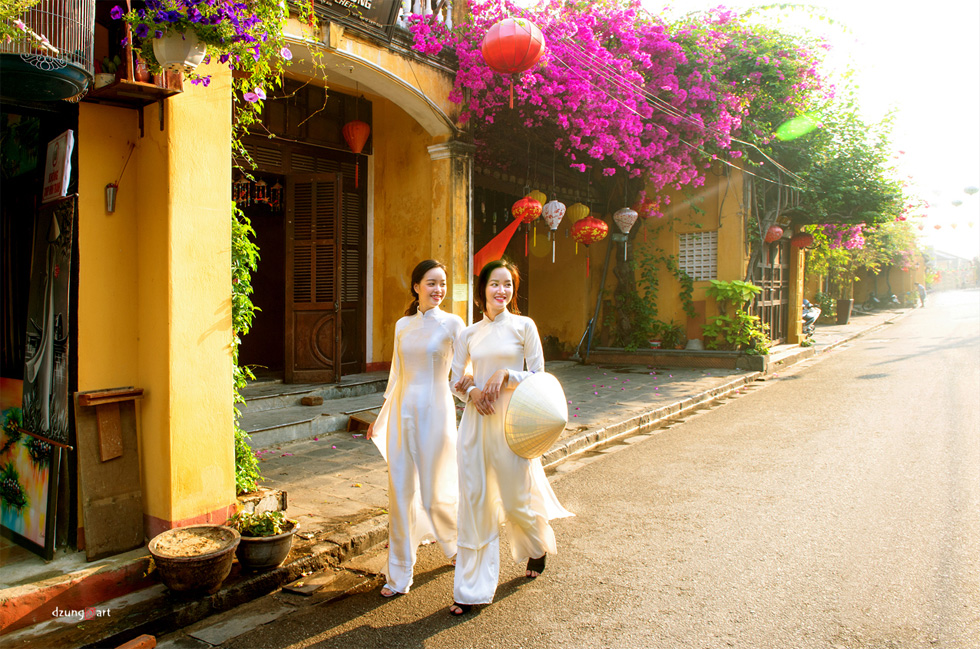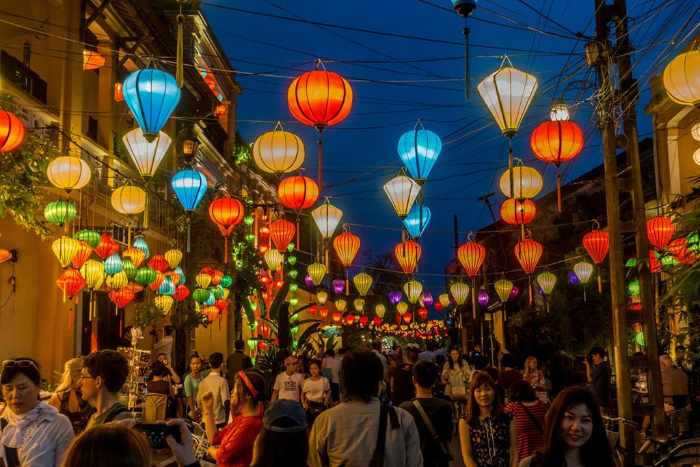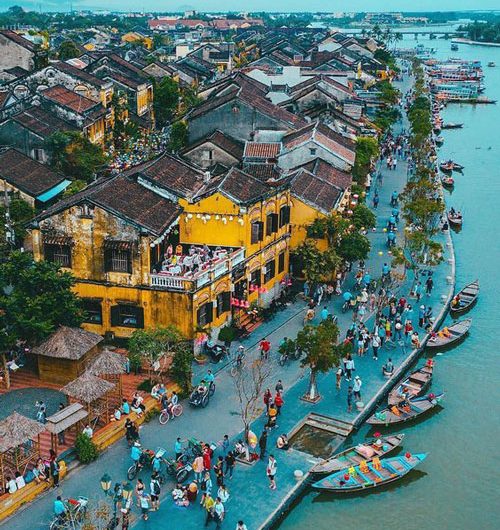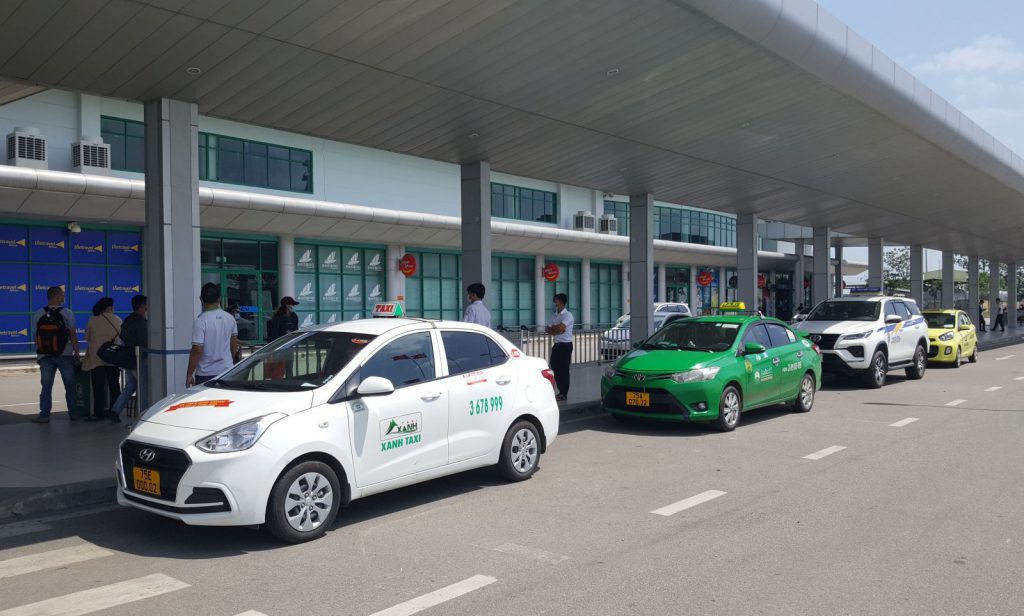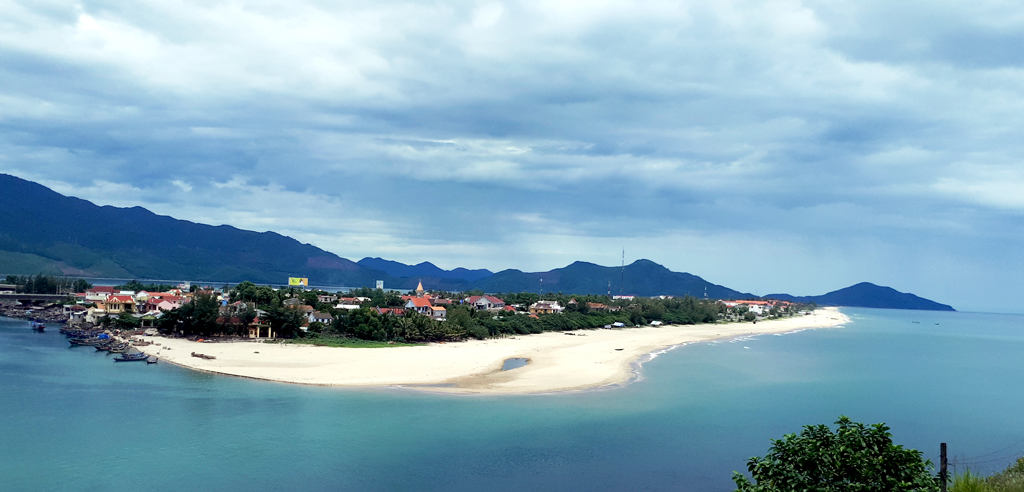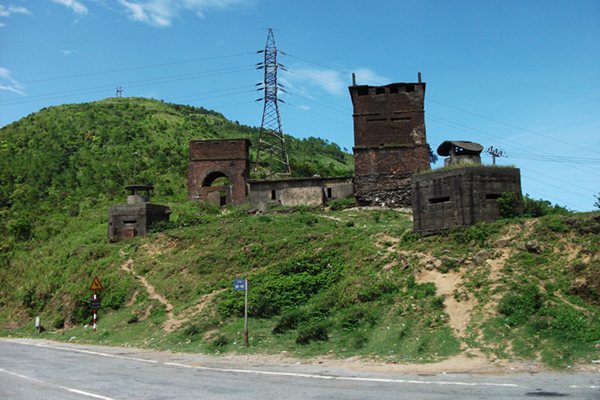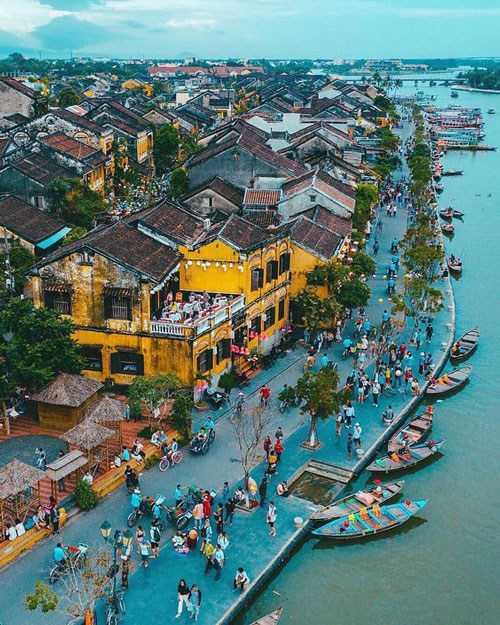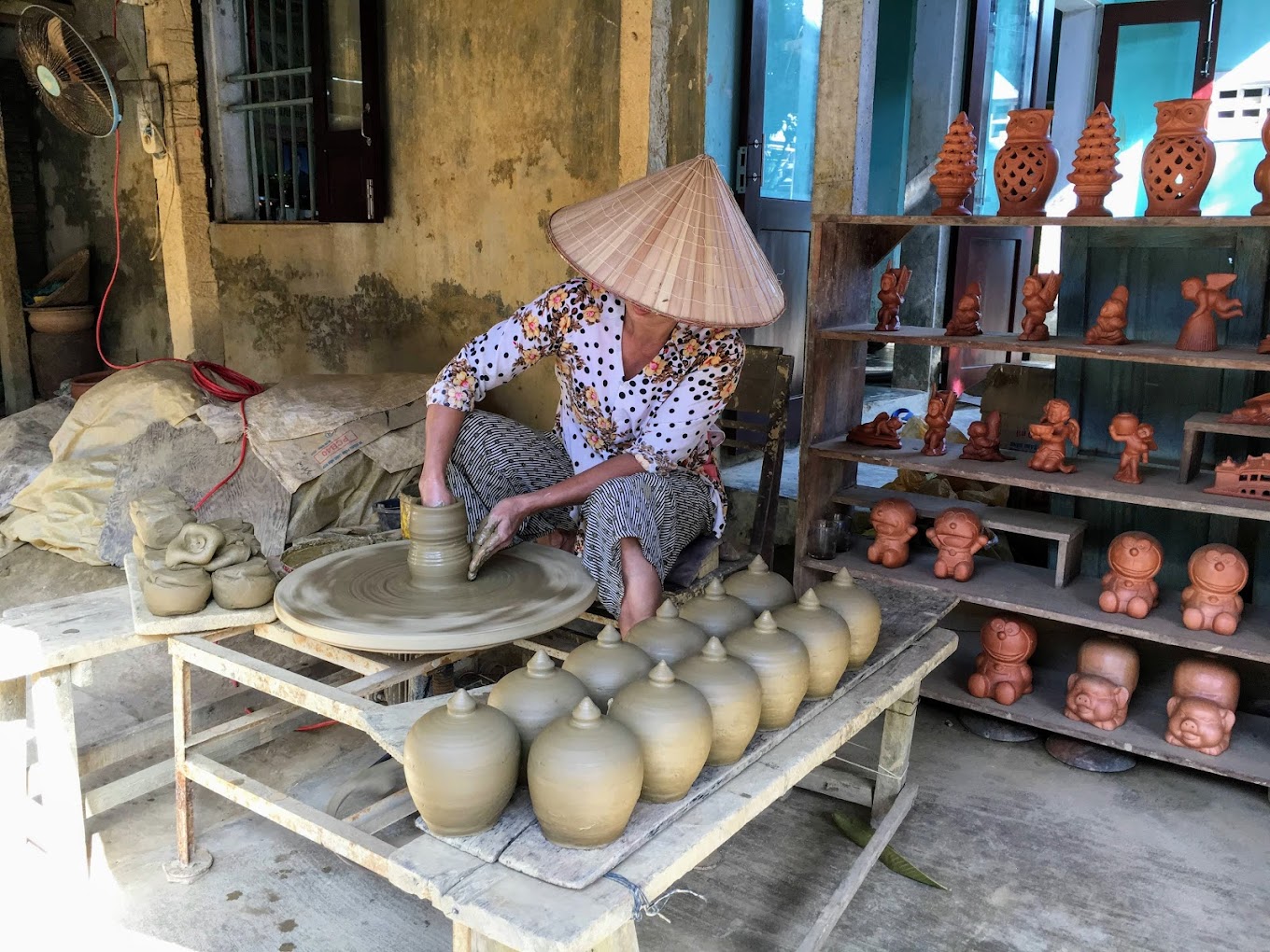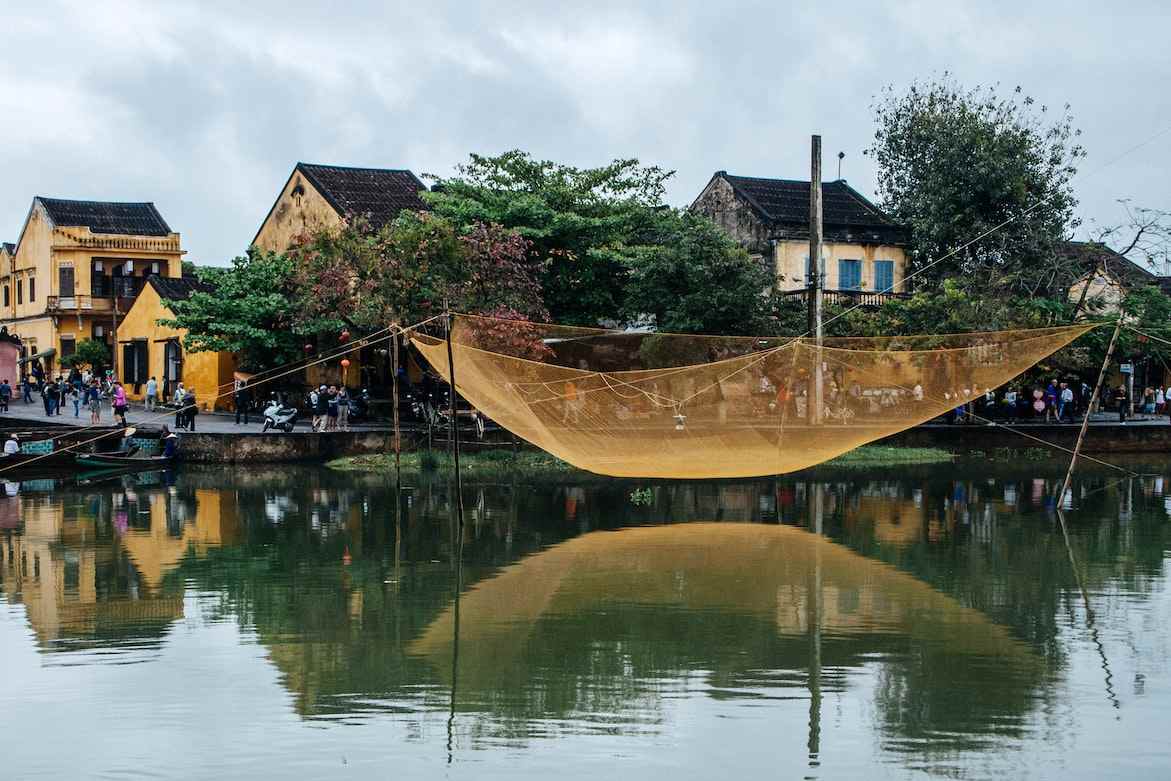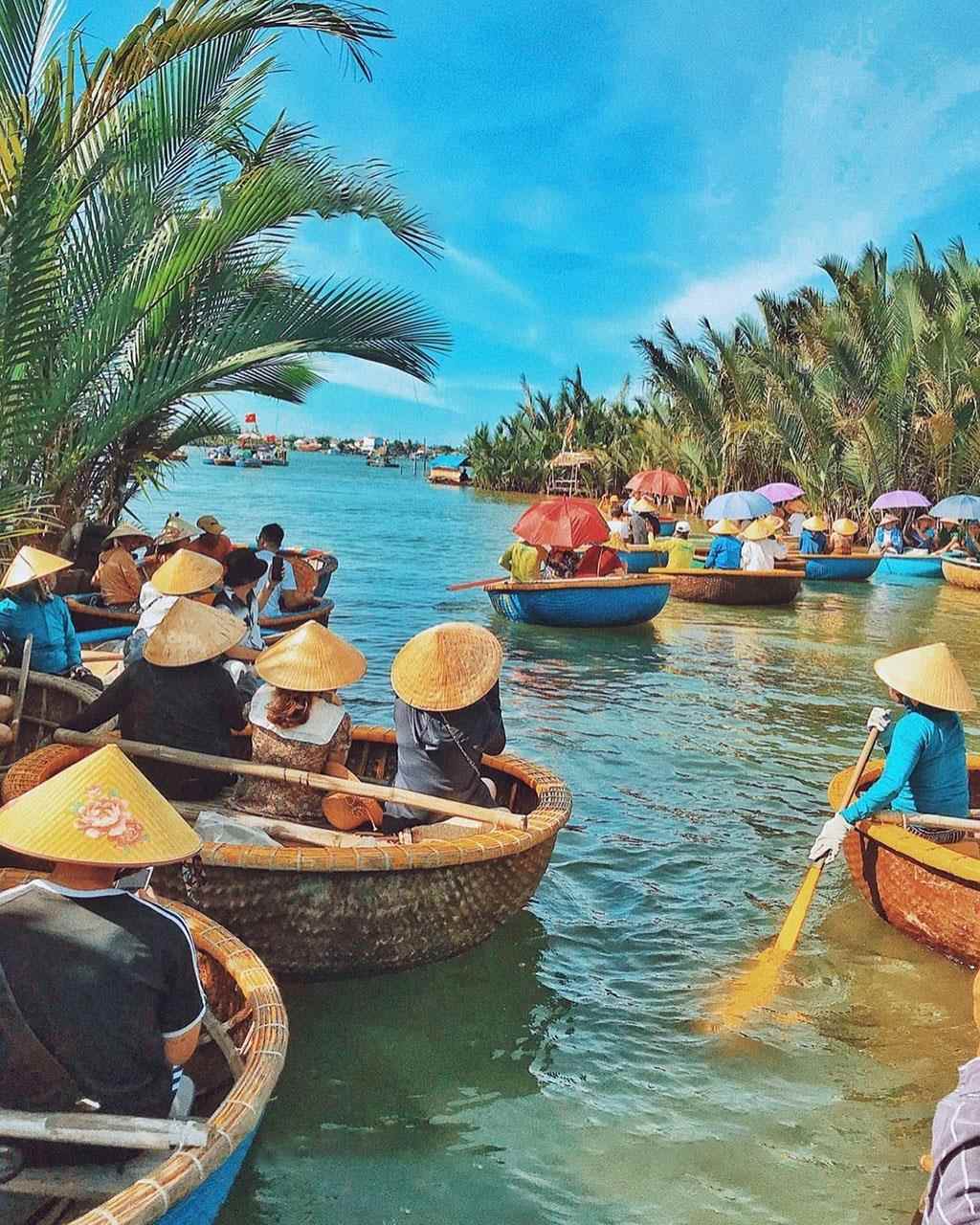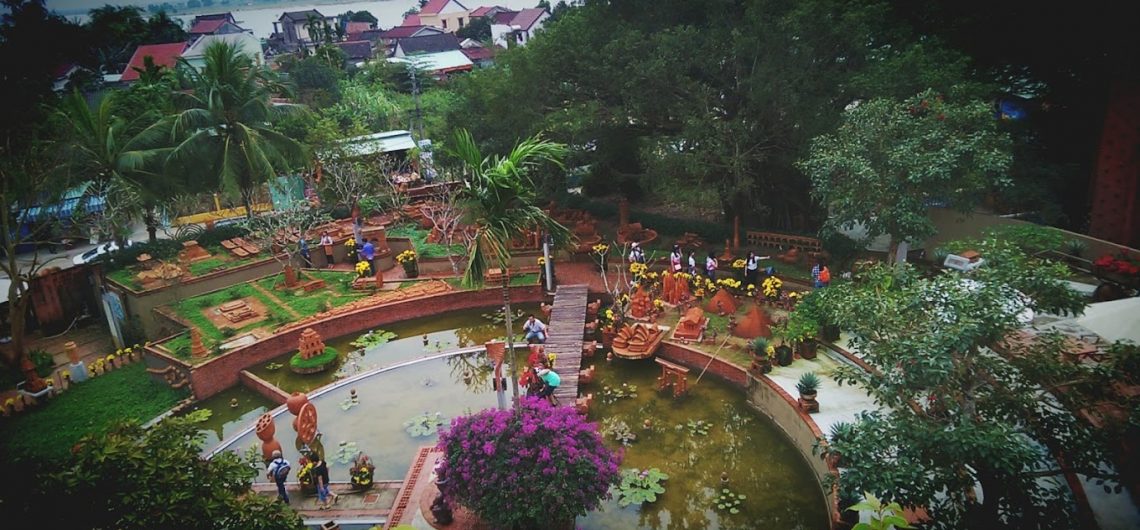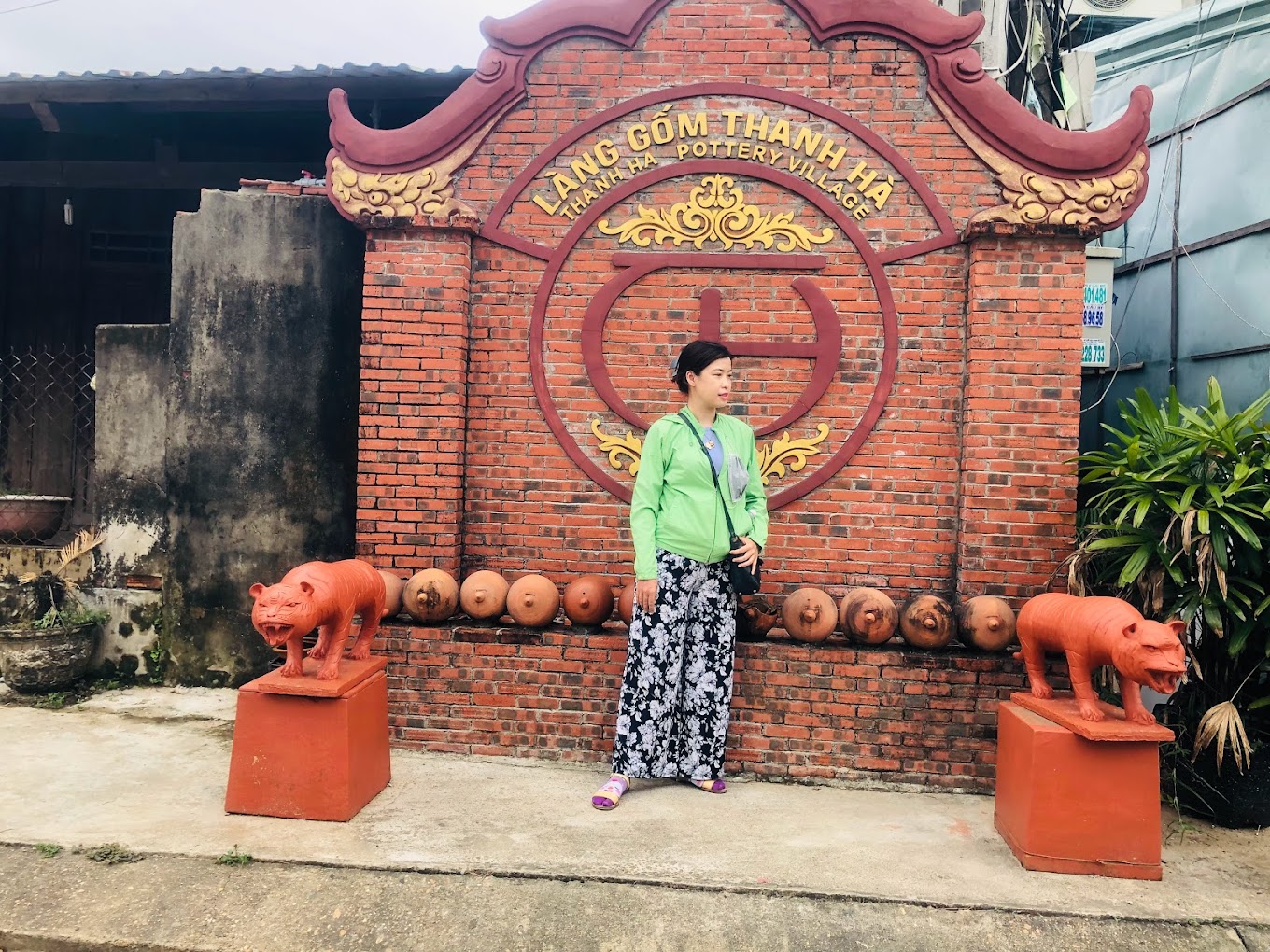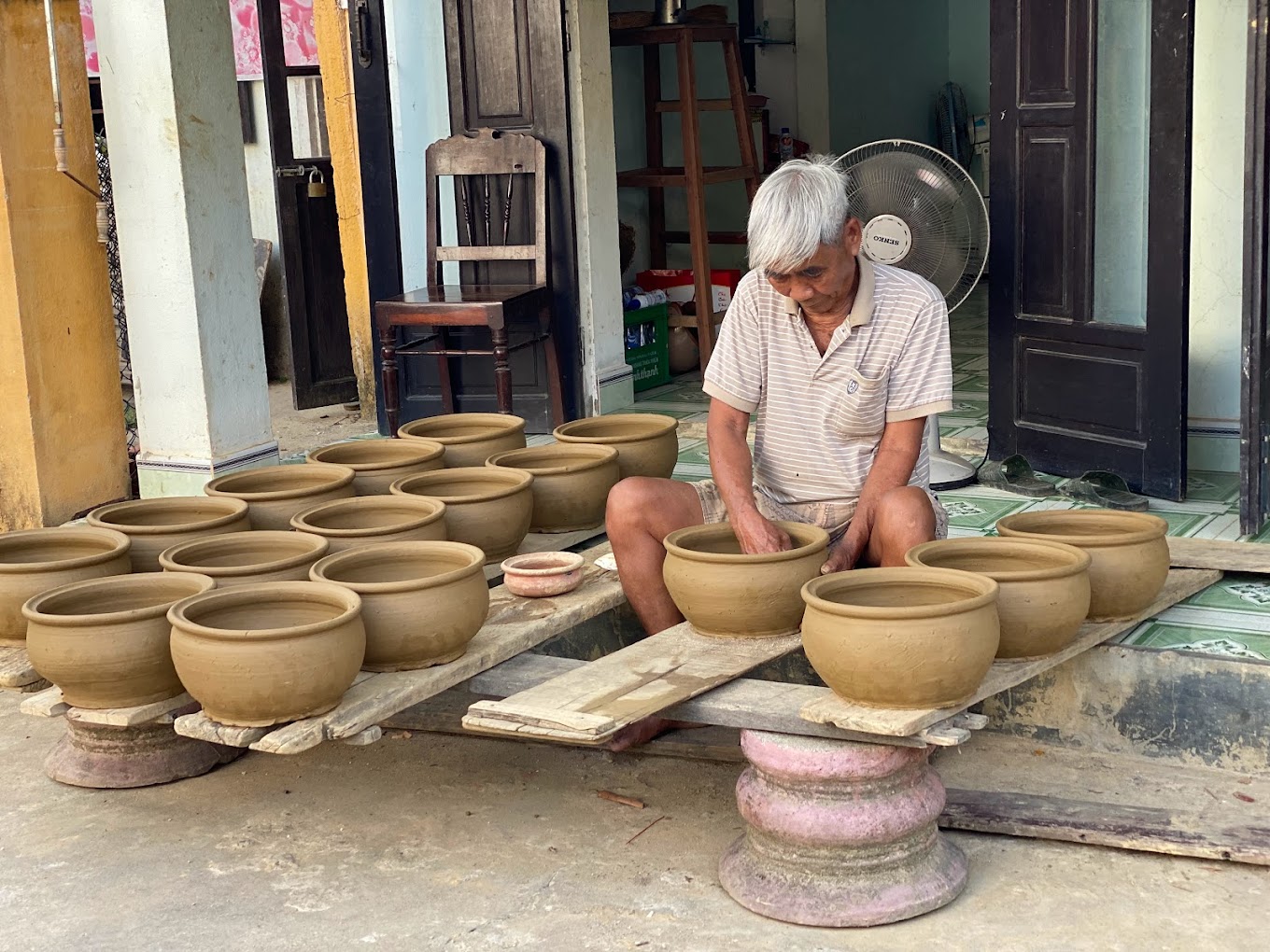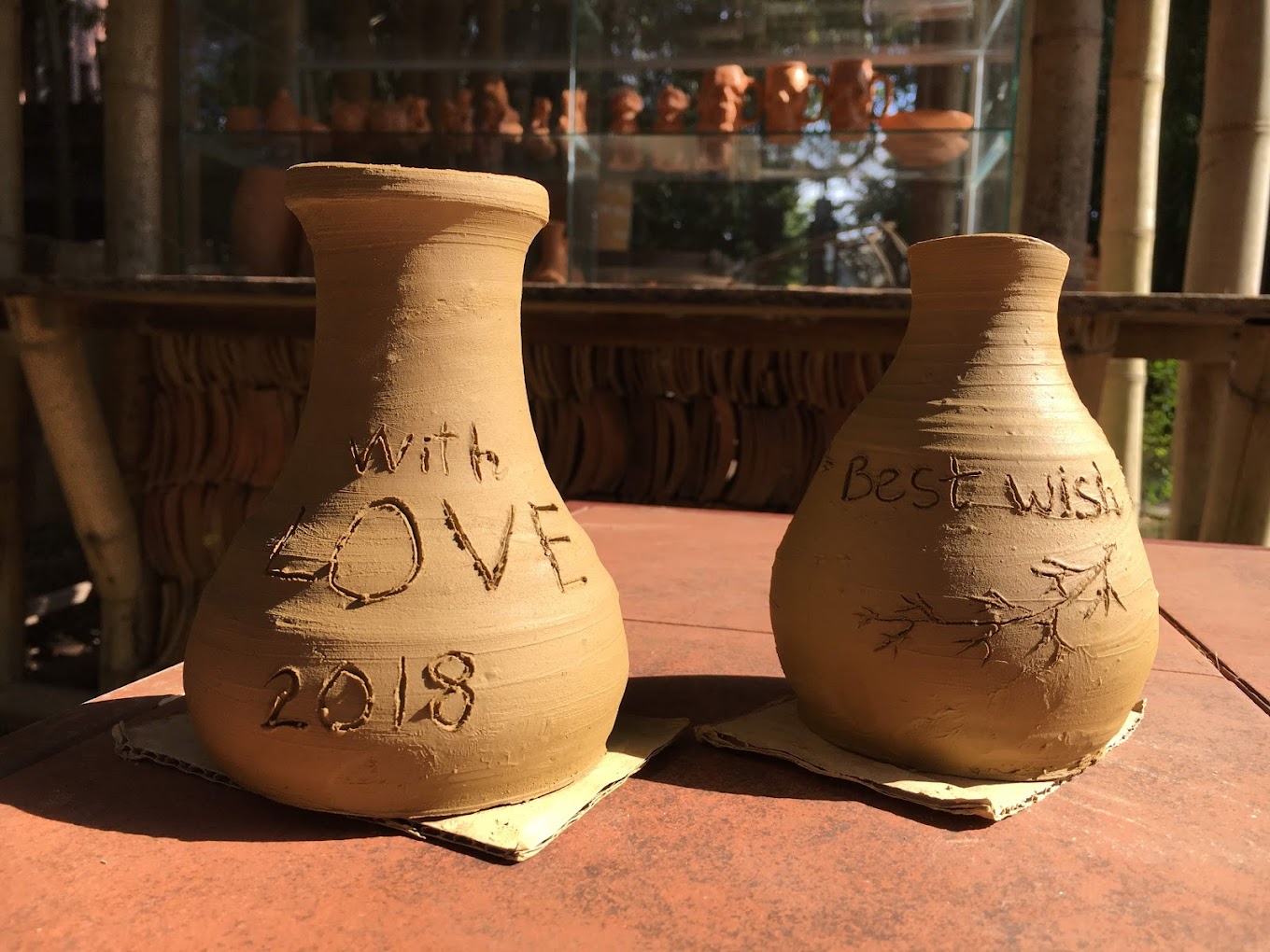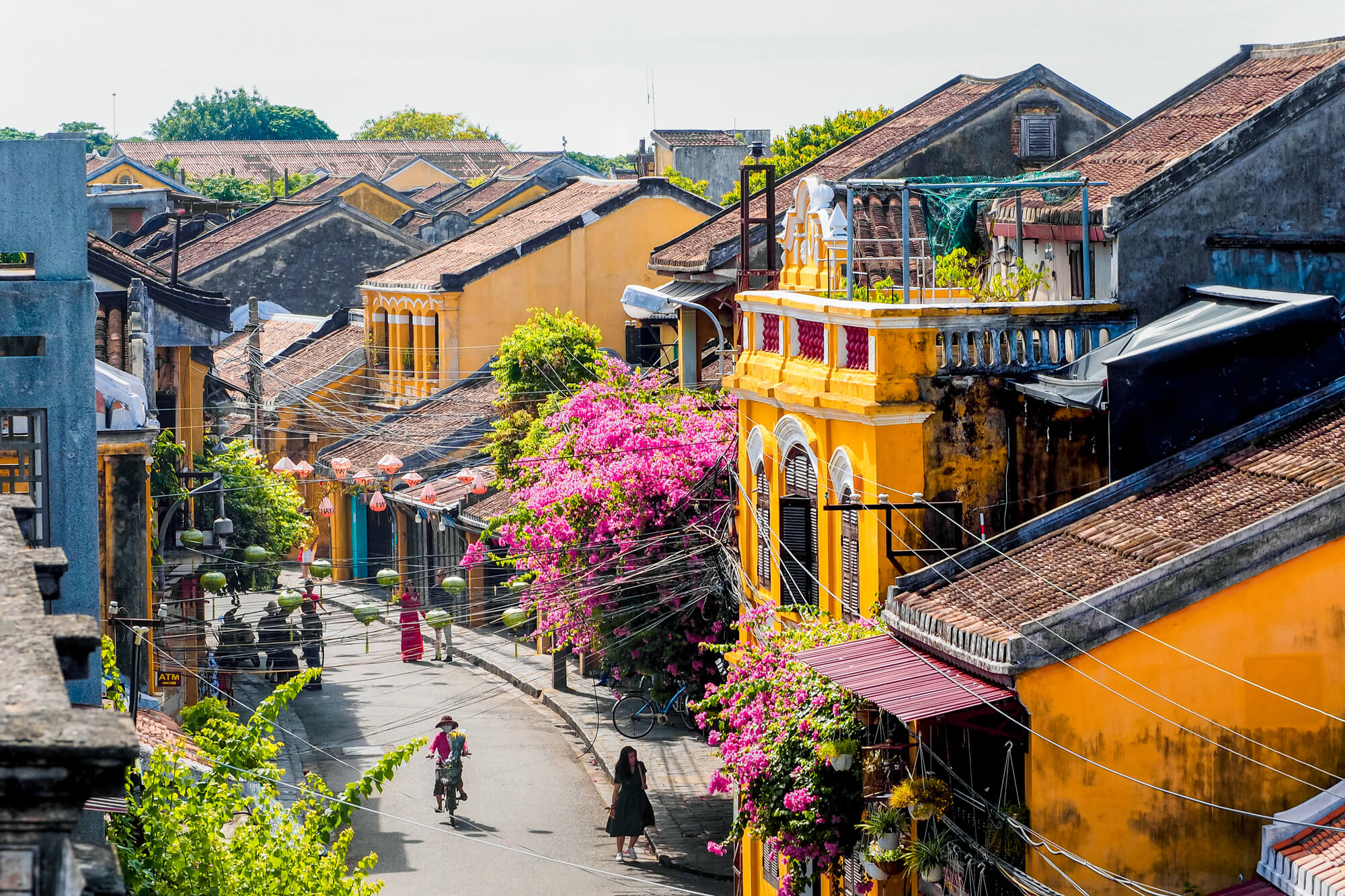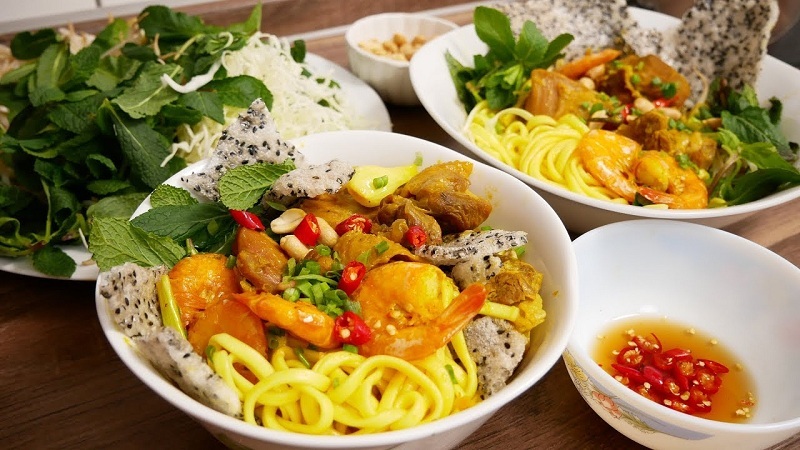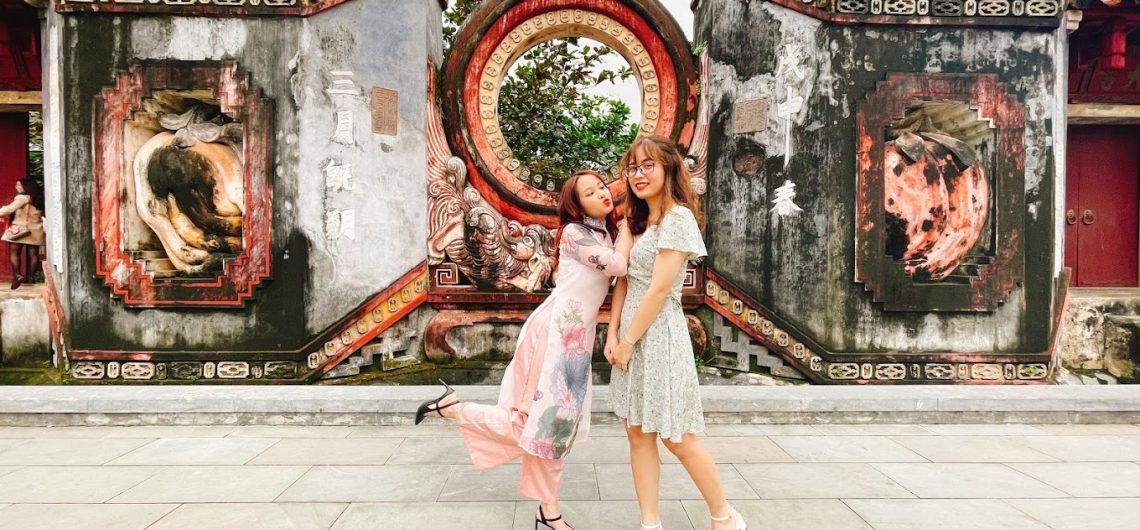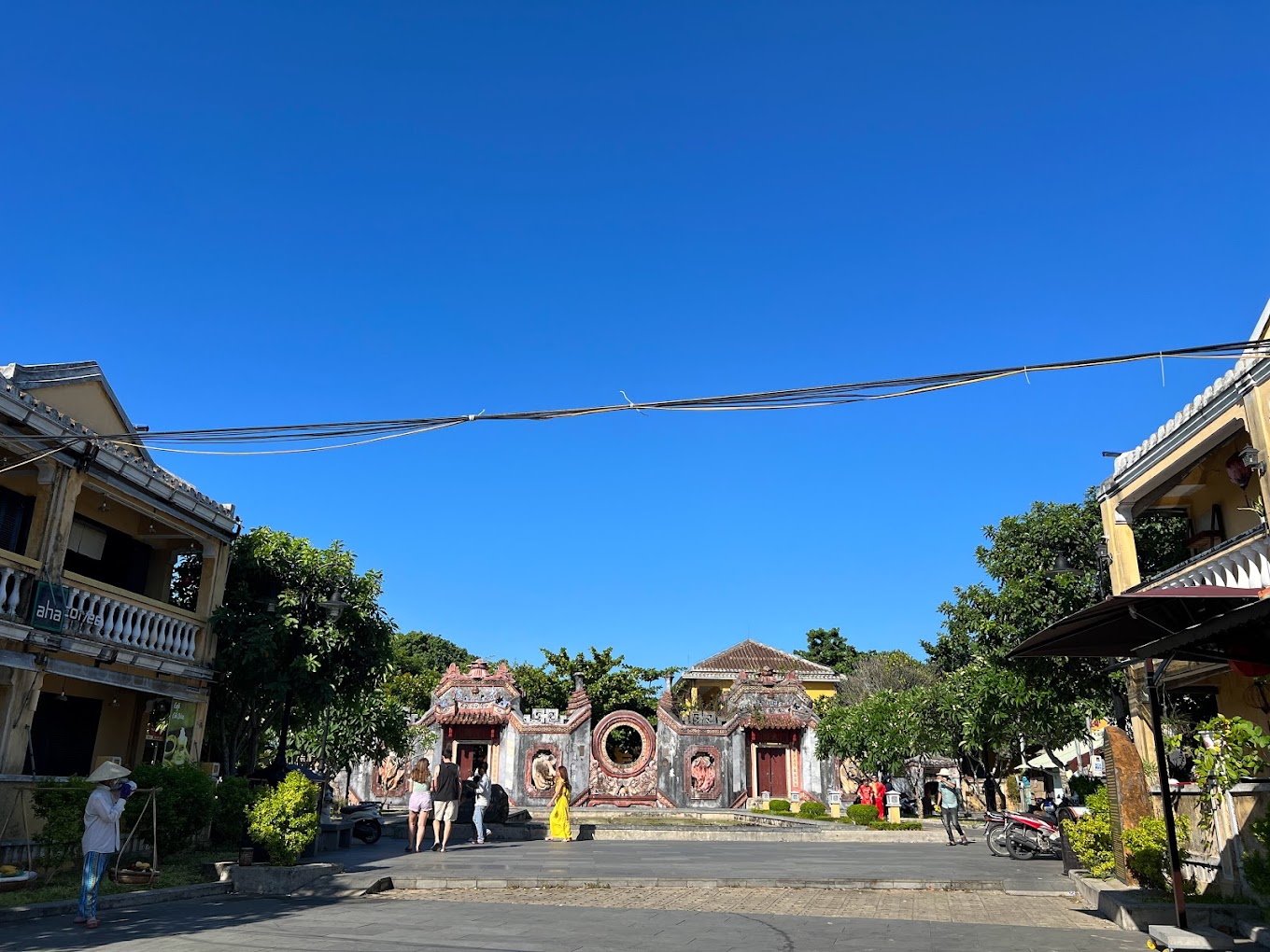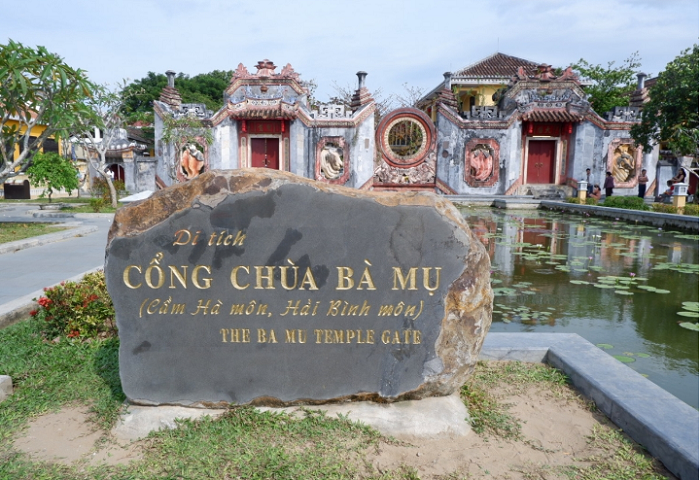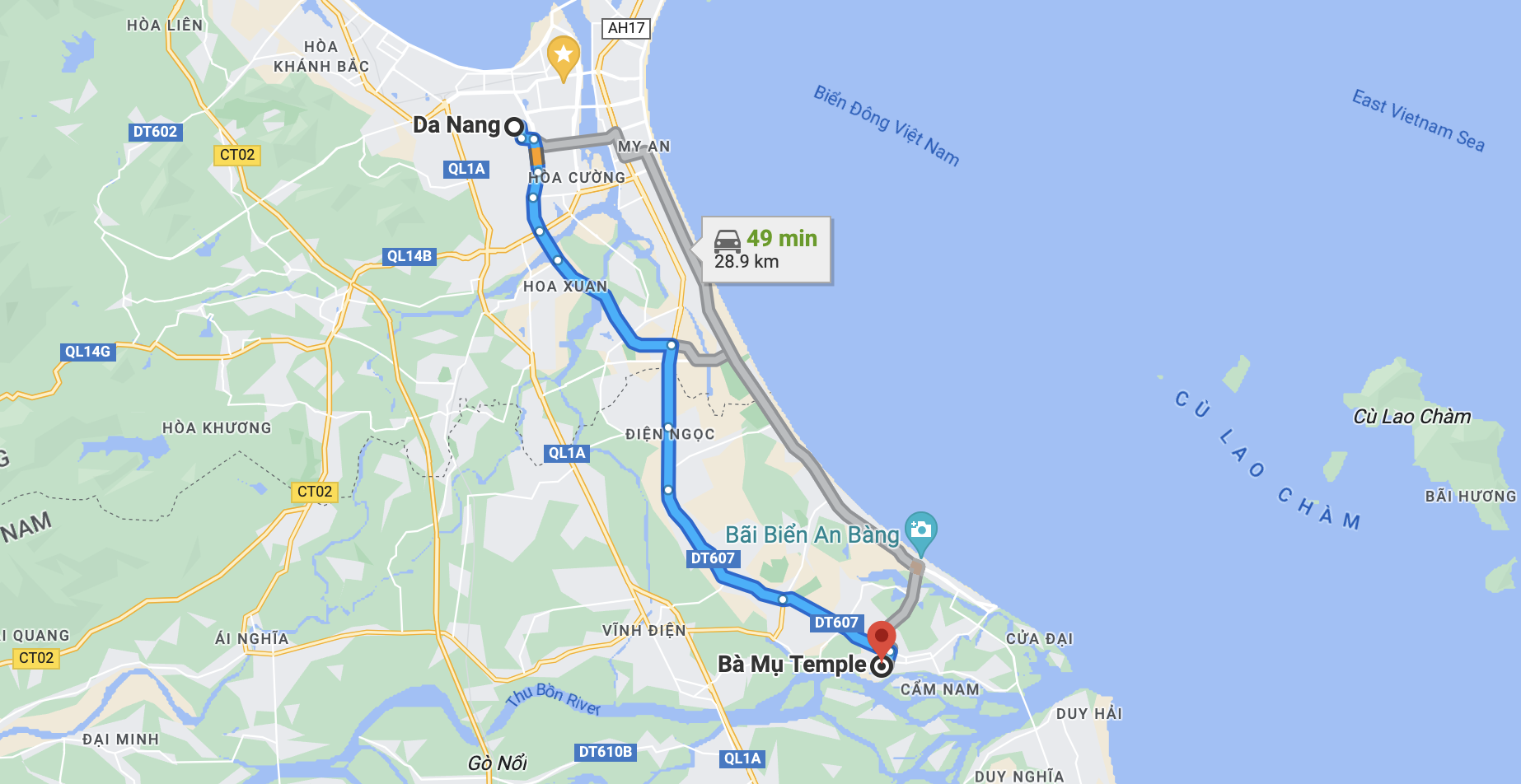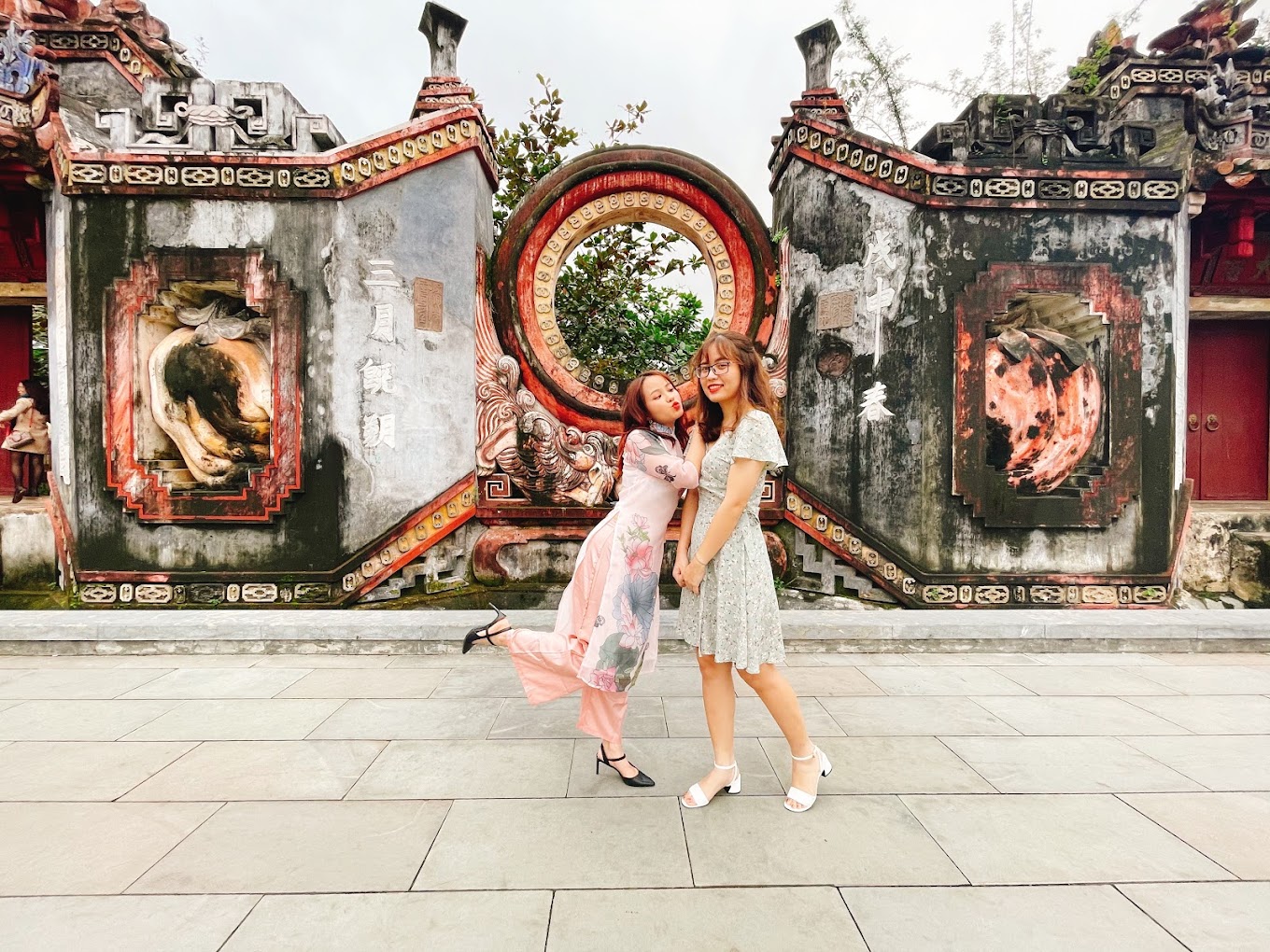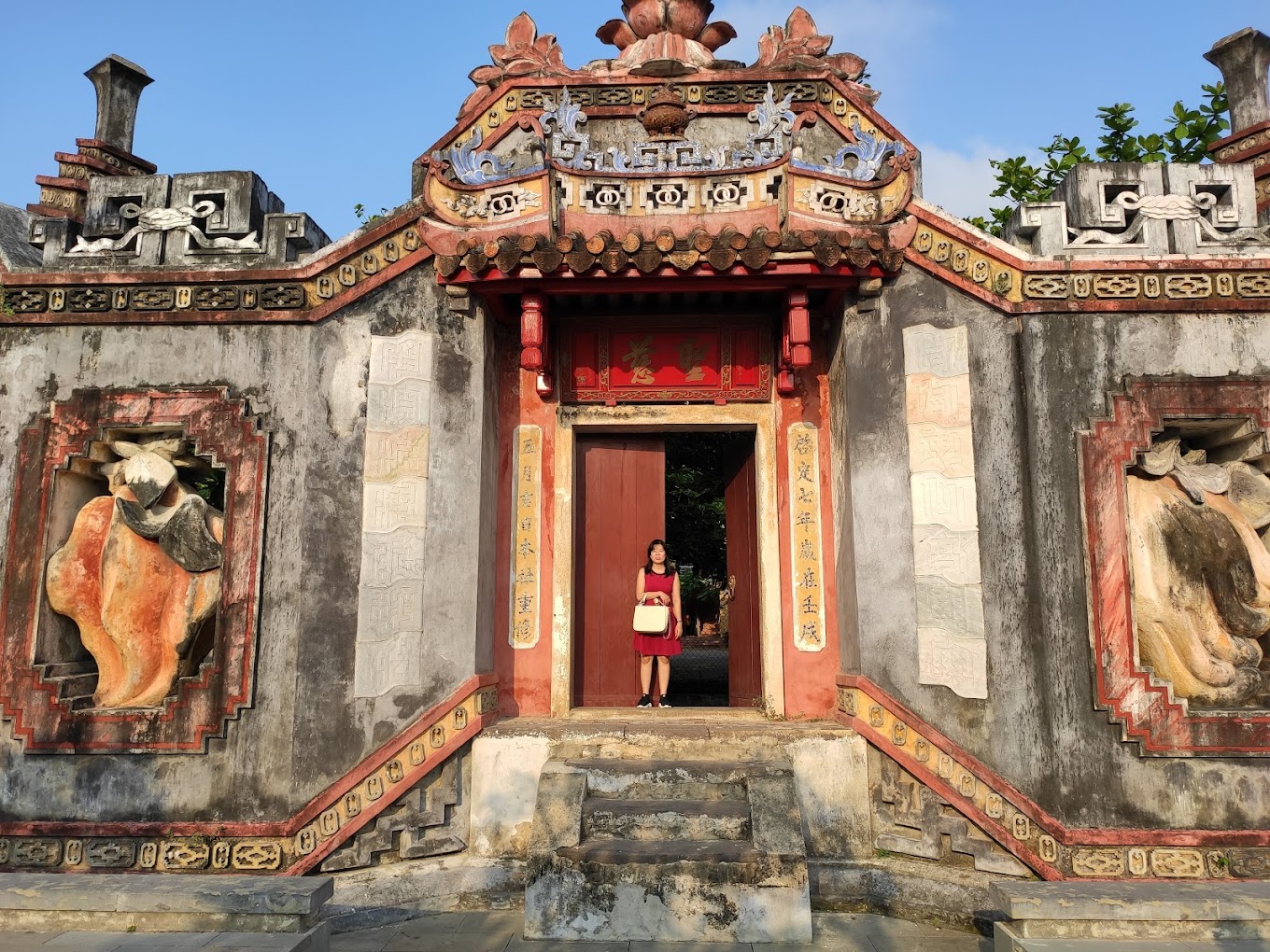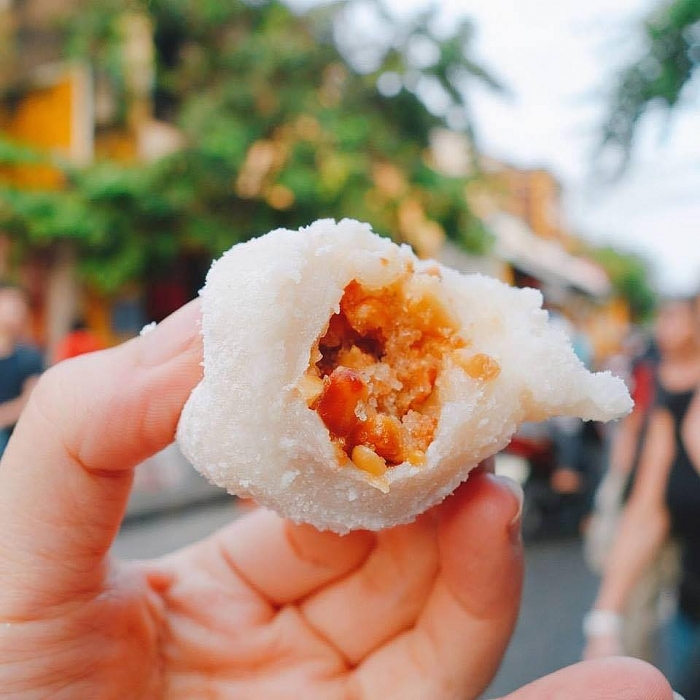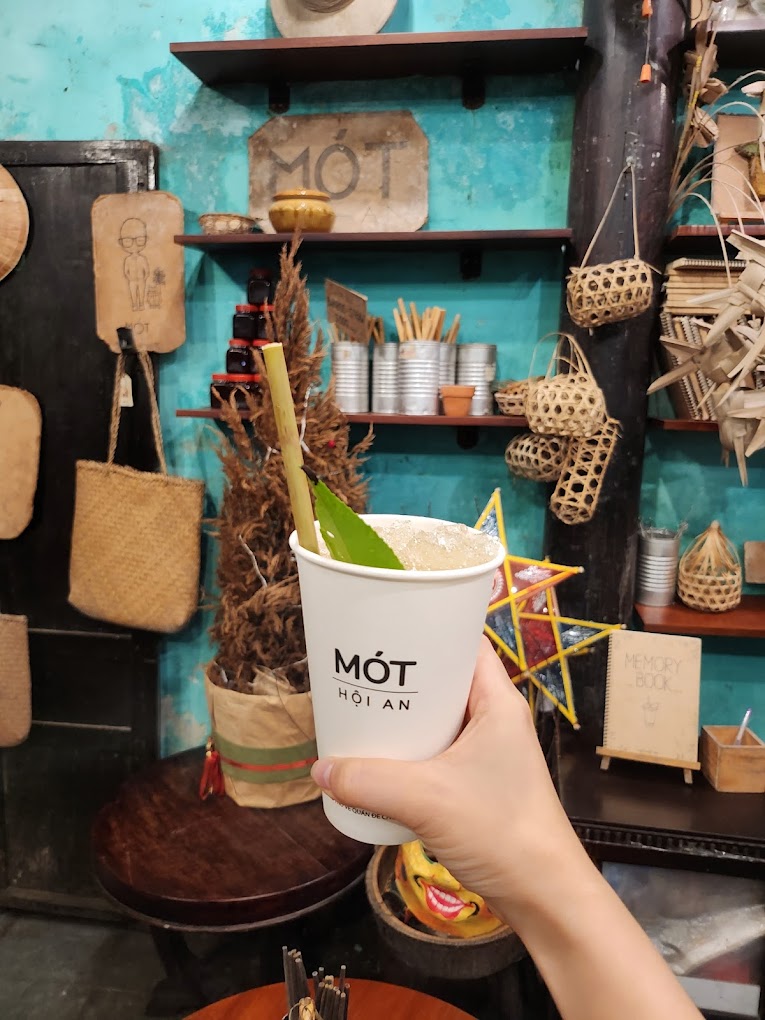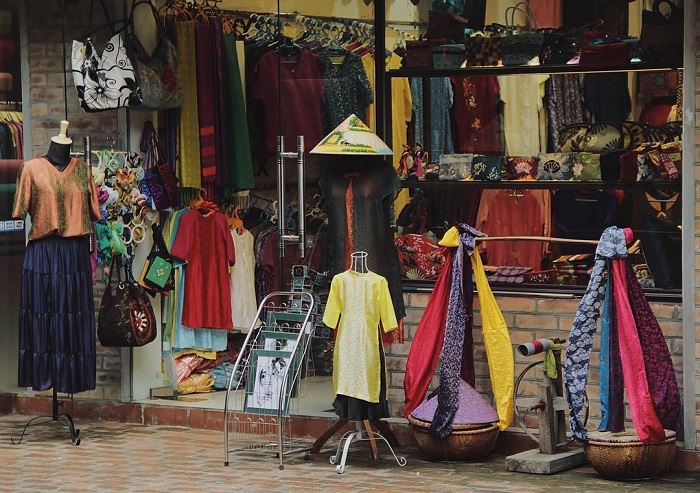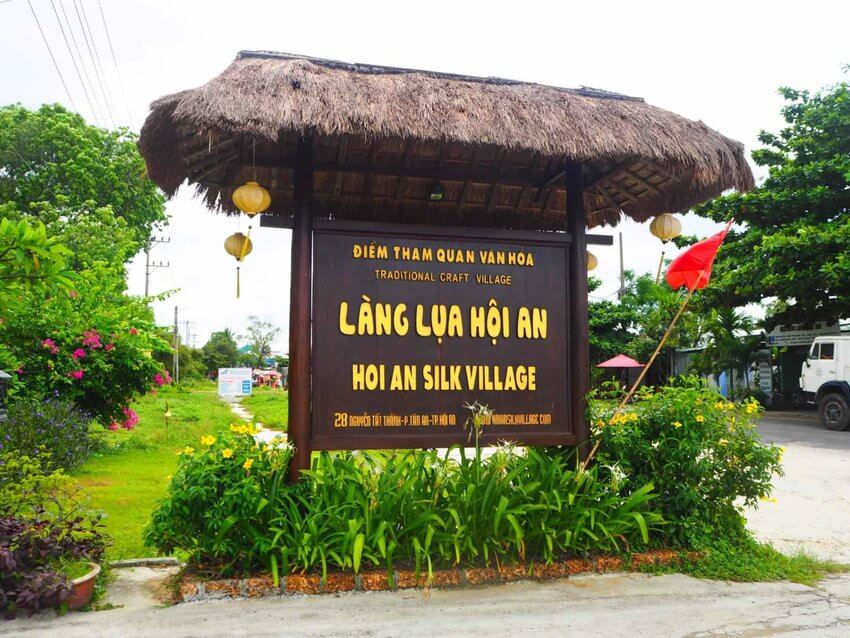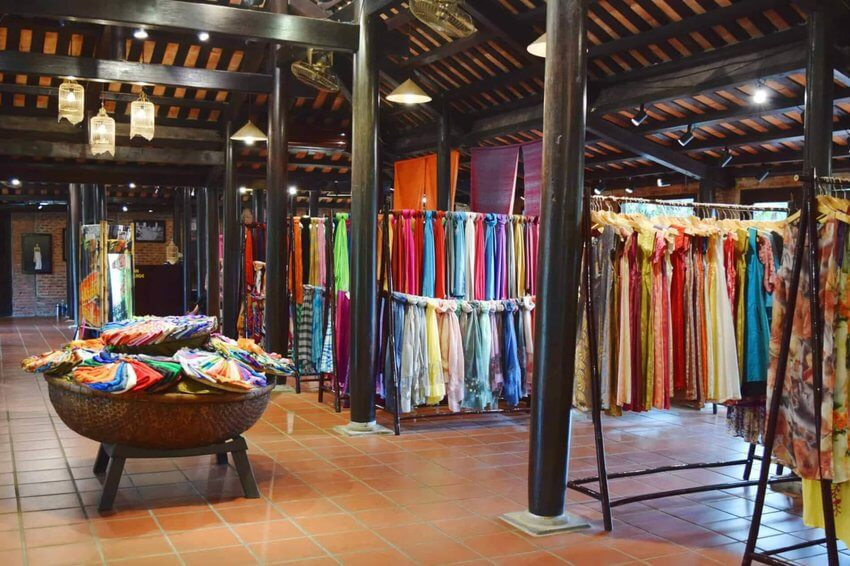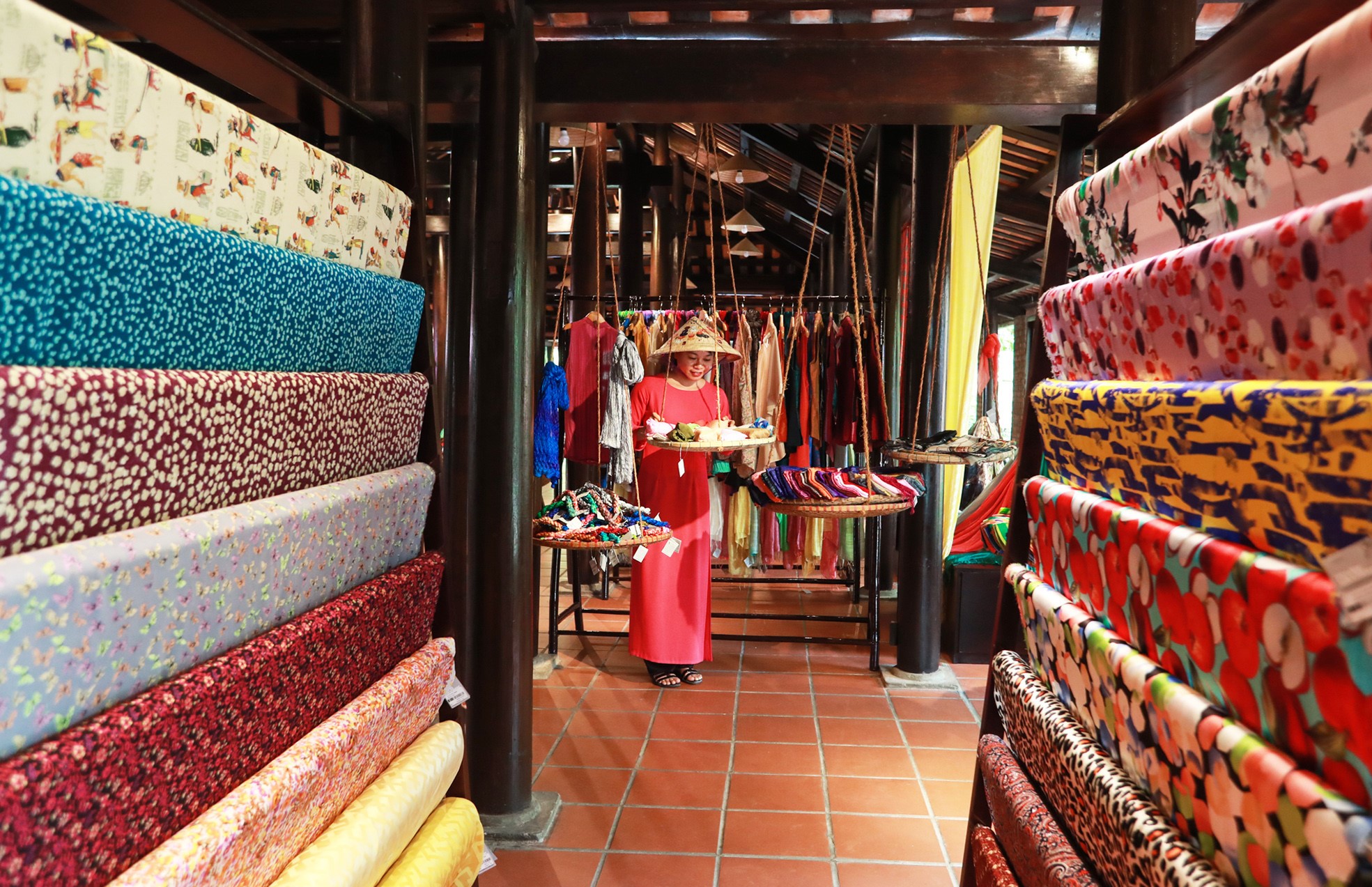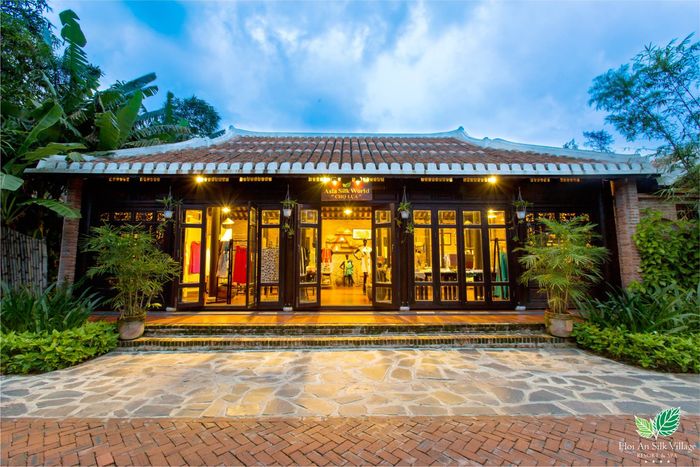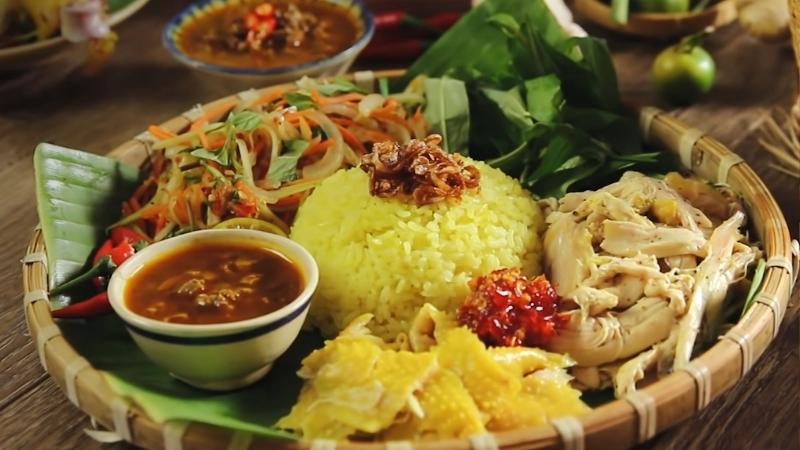Hoi An is not only known for its ancient houses and assembly halls but also for its numerous temples and spiritual landmarks of great cultural value. One of these notable places is Ong Pagoda. Ong Pagoda in Hoi An, a sacred temple nearly 400 years old, has become a popular destination for many visitors. Let’s discover the special features of this temple together with DanangPrivateCar.com’s.
A few details about Ong Pagoda in Hoi An:
Where is Ong Pagoda located?
Ong Pagoda is also known as Quan Cong Mieu. This temple is situated on Tran Phu Street, quite close to the center of Hoi An’s ancient town. Its favorable location makes it convenient and easy to reach.
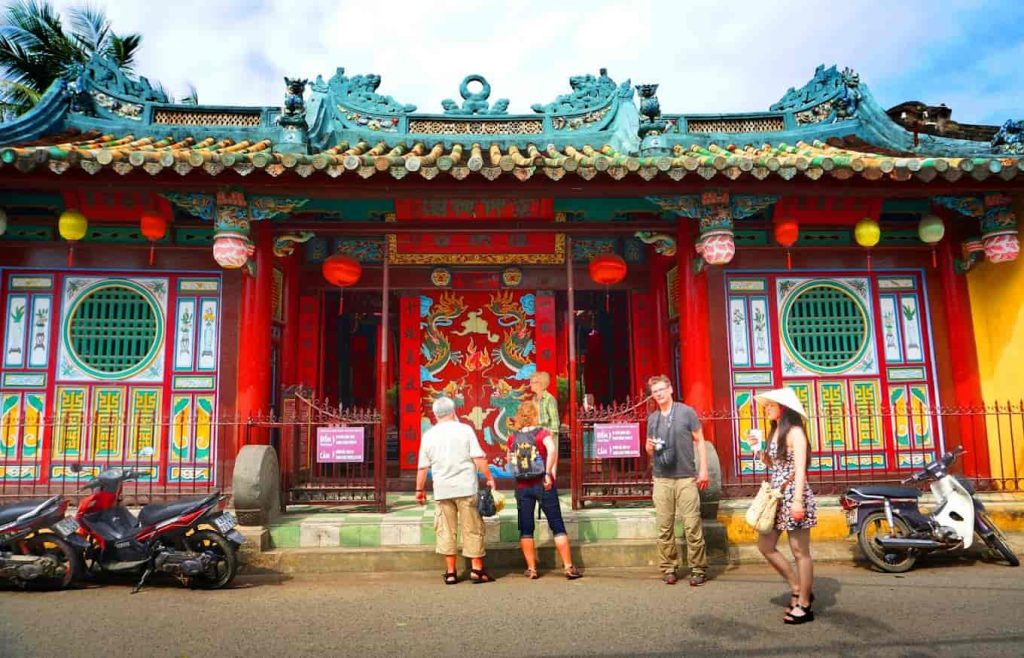
Who is worshiped at Ong Pagoda?
Similar to the Lady Buddha Pagoda and the Japanese Covered Bridge, Ong Pagoda does not worship the Buddha. Instead, it was built to worship Quan Van Truong (or Quan Vu) – a talented general during the Three Kingdoms period.
He is an ideal role model, symbolizing high moral values: righteousness, loyalty, trustworthiness, and bravery. People worship and respect him as a way to show reverence, praising his loyalty, and ethical principles, with the hope that future generations will follow his example.

An overview of the history of Ong Pagoda in Hoi An:
According to dulichsontra.com, Ong Pagoda was first constructed in 1653 during the 17th century. This was a period of bustling trade and prosperity for Hoi An as an international trading port.
At that time, Hoi An’s ancient town was a major international trading hub, attracting merchant ships from various countries around the world for exchange, commerce, and trade. Many Chinese merchants chose to settle and live in Hoi An.
They contributed their efforts and resources to the construction of temples, shrines, and places of cultural and spiritual activities. Ong Pagoda in Hoi An is a testament to the Chinese architectural style.
Since its establishment, Ong Pagoda has undergone six renovations in 1753, 1783, 1864, 1904, and 1966. While the details may have faded over time, the overall structure remains remarkable. On January 29, 1991, the pagoda was recognized as a National Historic and Cultural Heritage Site.
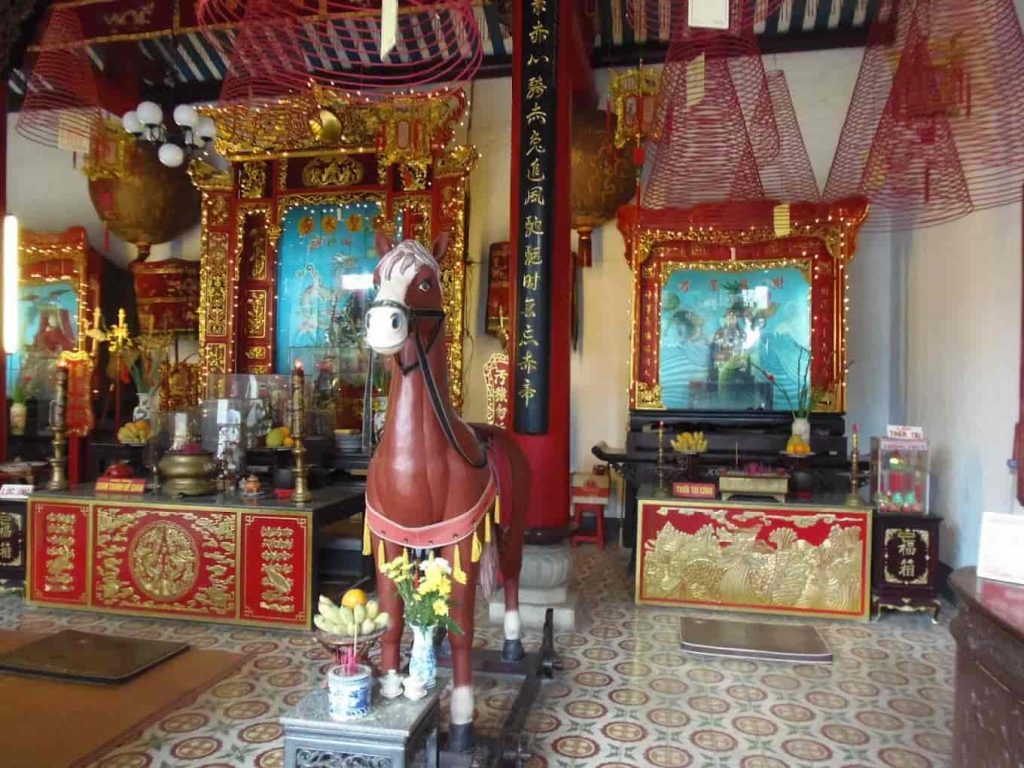
In the past, Ong Pagoda was considered the center of religious worship in Quang Nam province. It was a place where traders frequently visited for business and seeking good fortune. Today, besides being a religious gathering place for locals, the pagoda is also a popular tourist destination in Hoi An, attracting many visitors.
Book your private trip from Da Nang to Hoi An now with a professional, safe, and efficient driver. Our driver will pick you up at the airport, train station, or your hotel in Da Nang, ensuring a convenient and timely departure to Hoi An.
Directions to Ong Pagoda in Hoi An
Danangprivatecar.com provides directions from both the center of the ancient town and Danang city, as many tourists visiting Danang also want to explore Hoi An and visit Ong Pagoda.
From the center of the ancient town:
Starting from the center of the ancient town, you can head to Cua Dai Street – Tran Hung Dao Street and then turn left onto Nguyen Hue Street. From there, continue for about 240 meters, and you will see Ong Pagoda on the left. The distance is only about 1 kilometer, and it takes around 3-5 minutes to travel.
Depending on your preference, you can choose to walk or ride a bicycle. However, it is recommended to rent a bicycle for the convenience of getting around and enjoying the beautiful scenery along the way, with rental prices around 40,000 VND per bike.
From Danang City:
From the center of Danang City, you can choose to ride a motorbike, take a taxi, rent a car, or take a bus to reach Ong Pagoda. If you prefer freedom and independence, riding a motorbike or renting a car is recommended. For those who want convenience without having to navigate, public transportation is available.
There are several route options to choose from. One popular and commonly chosen route is the coastal road via Vo Nguyen Giap Street, specifically:
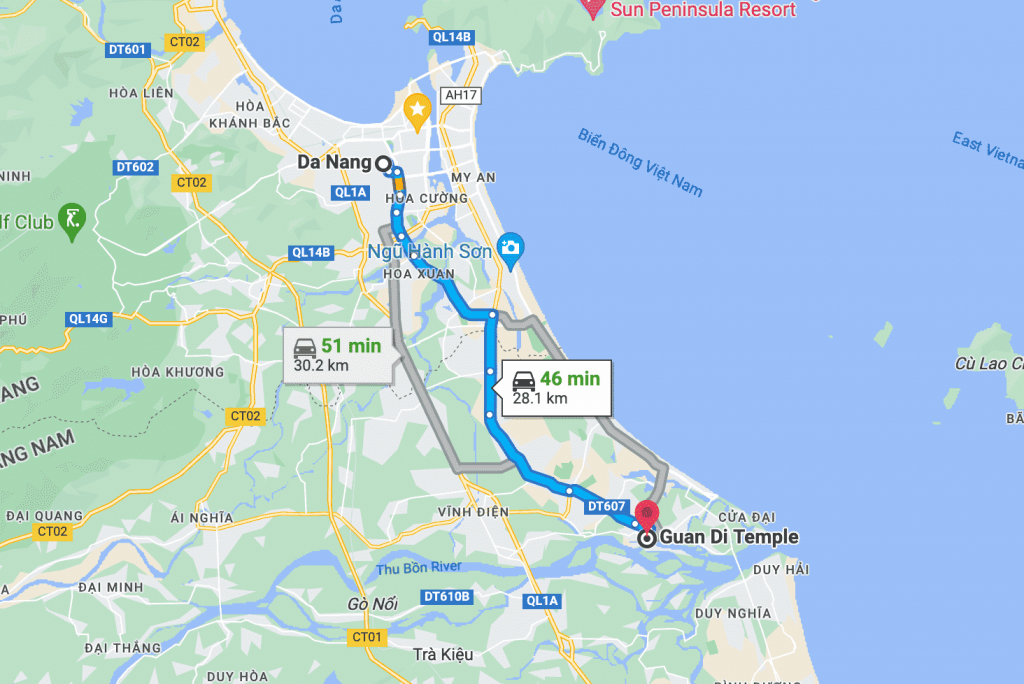
Dragon Bridge – Vo Van Kiet Street – turn right onto Vo Nguyen Giap Street – Truong Sa Street – Lac Long Quan Street – Nguyen Tat Thanh Street – Ly Thuong Kiet Street – Thai Phien Street – Tran Phu Street.
For the convenience of your trip from Da Nang to Hoi An to visit Ong Pagoda or other attractions, you can book a private car with a driver In Danang from DanangPrivateCar.com. With a day trip from Da Nang to Hoi An, you don’t need to worry about the time. Our driver will pick you up at your hotel in Da Nang or any location in Da Nang. Upon arrival in Hoi An, while you explore the sights, our driver will wait for you. After finishing your tour, the driver will take you back to Danang, or you can choose to stay in Hoi An.
Opening hours and recommended time to visit Ong Pagoda in Hoi An:
To visit and explore Ong Pagoda, it’s important to know the following points:
Opening hours of Ong Pagoda:
To ensure the solemnity and order of the pagoda, Ong Pagoda has specific opening and closing hours. Visitors should only come within the designated time frame.
- Opening hours: from 6:00 AM to 5:00 PM daily.
Recommended time to visit Ong Pagoda in Hoi An:
Based on the experience shared by the locals, you can visit this pagoda at any time. Most activities take place indoors or in covered areas.
However, if you want to capture some Instagram-worthy photos, it’s advisable to consider the best timing. Generally, the period from February to August is suitable.
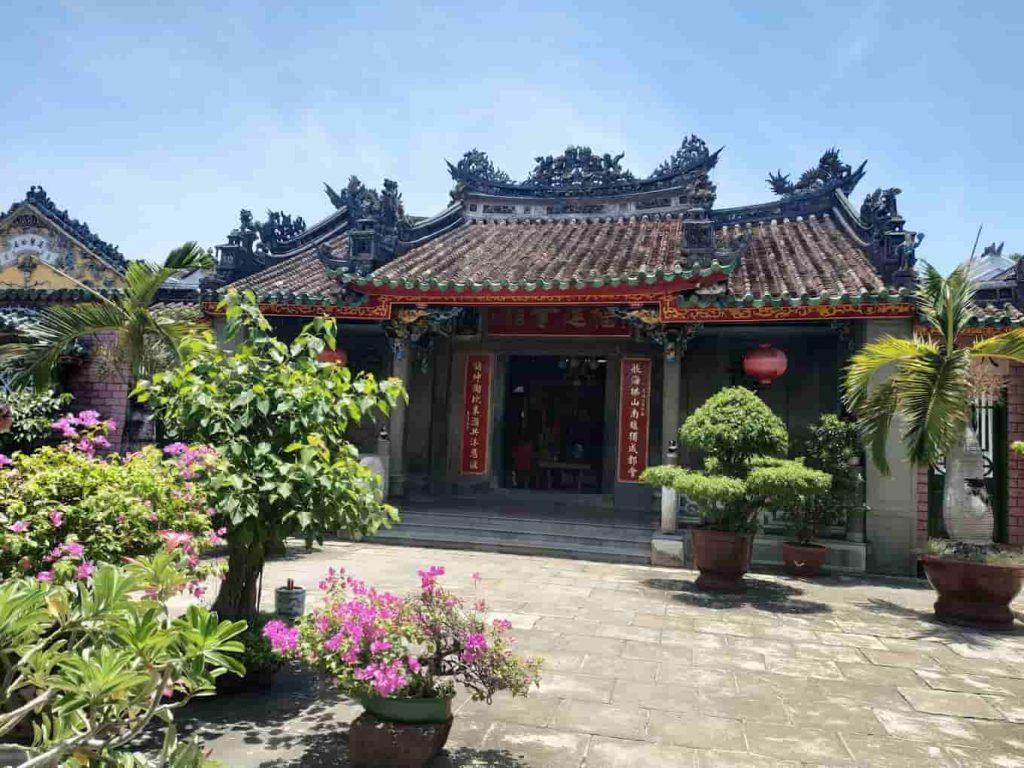
During this time, it is spring and dry season in Hoi An, with sunny weather. It’s convenient for getting around, enjoying the beauty of the ancient town, and participating in outdoor activities and photo opportunities.
Note: If you visit in the morning, it’s recommended to arrive before 10:00 AM, and in the afternoon, it’s best to arrive after around 2:30 PM.
The distinctive architecture of Ong Pagoda in Hoi An:
The entire pagoda complex consists of four main buildings, two side halls, one front courtyard, and one main hall. It is constructed using fired bricks, ceramic tiles, and intricately carved and decorated details.
Four main buildings:
The four main buildings of this pagoda are constructed in the shape of the Chinese character “口” (mouth). The roofs are designed in a curved-tile style with glazed colors.
The high roofs are adorned with dragon motifs, crafted with white and colored porcelain pieces. The craftsmanship and attention to detail are exquisite.
Main gate and front courtyard:
The first point you will notice is the main gate of the pagoda. The main gate leaves a strong impression with its dragon tail-like structure twisting against the blue sky.
Passing through the main gate, there is an entrance leading to the front courtyard area. The front courtyard is spacious and well-maintained. Ong Pagoda also displays many remarkable antique items in this area.
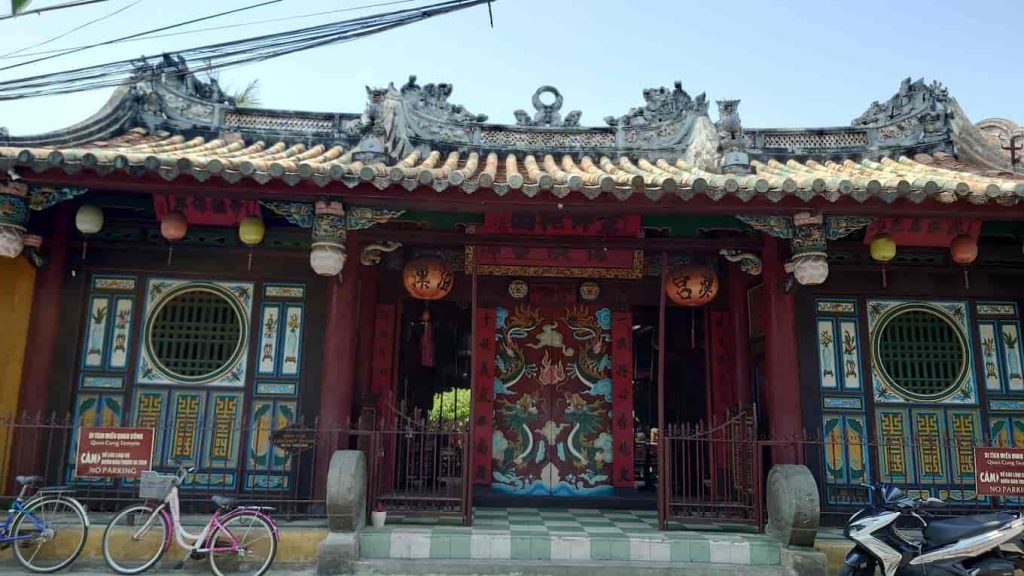
One of them is a bronze bell and a wooden drum that have been preserved since the reign of Emperor Bao Dai.
The front courtyard area of the pagoda.
Main hall:
The main area that captivates visitors the most is the main hall. Here, there is a statue of Quan Van Truong, portrayed with a dignified appearance, a solemn expression, and sharp features. His gaze is forward-facing.
In addition, the main hall also houses a statue of Quan Cong. On either side of him are statues of Chau Thuong and Quan Binh. On the left side is a white horse, and on the right side is a red-tufted horse, both large and tall, resembling real horses.
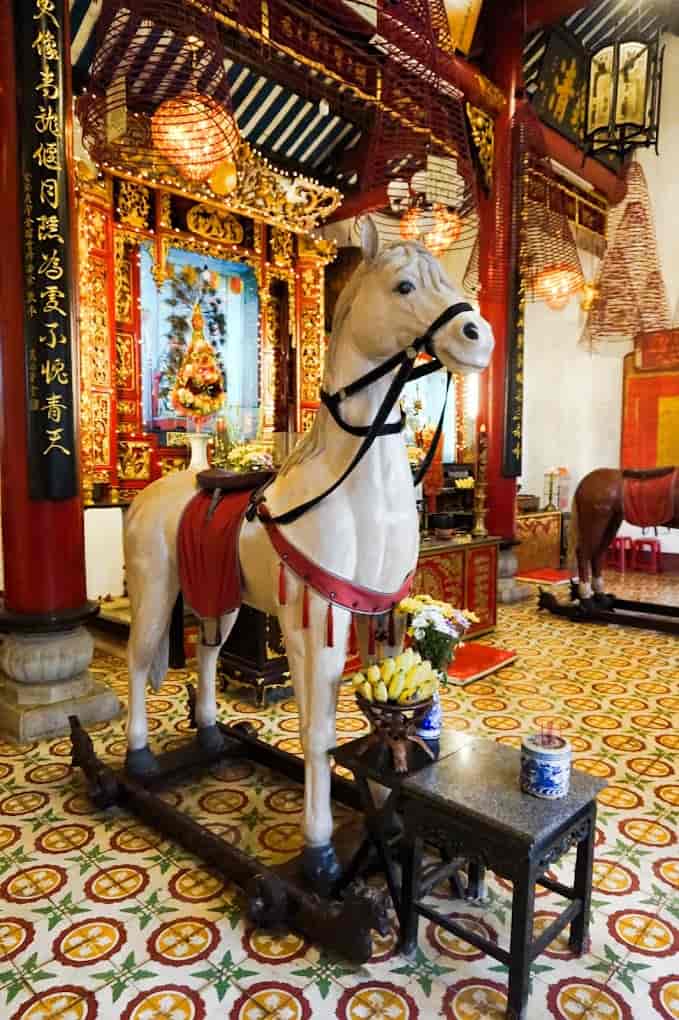
Inside Ong Pagoda, there are also many couplets, plaques, horizontal inscriptions, and commemorative writings that praise the achievements and virtues of Quan Cong.
Main activities that attract visitors to Ong Pagoda in Hoi An:
When visiting Ong Pagoda, apart from admiring the impressive architecture of the pagoda, visitors can also experience the following activities.
Learn about the cultural and historical values of Ong Pagoda.
Ong Pagoda still preserves many valuable ancient artifacts such as stone steles, ceremonial items, statues of Quan Cong, horizontal inscriptions, couplets, red-tufted horse statues, white horse statues, and more. Almost all of them are remarkably well-preserved.
In particular, the poem “Vinh” and the ancient fable composed by Mr. Xuan Quan Cong Nguyen Nghiem (the father of the great poet Nguyen Du) in 1775 are still kept at the Bridge Pagoda in Hoi An.
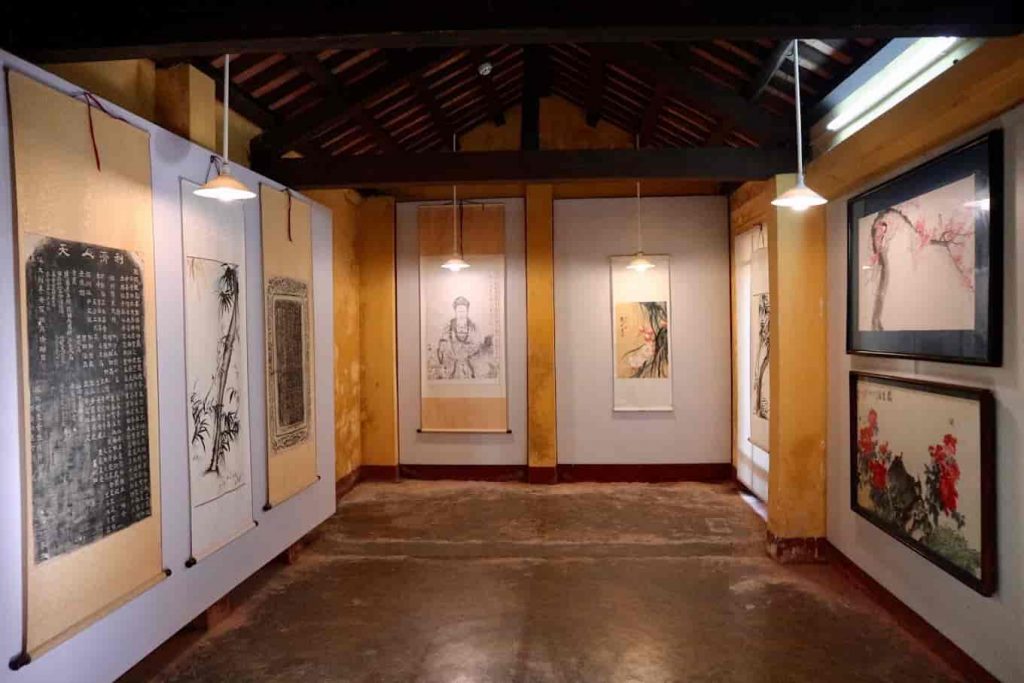
In addition, two poems by Nguyen Lenh Tan and Uong Si Cu are also exhibited here. They are all relics from the 18th century that have survived until now.
Read more: This summer, visit the Tam Thanh Mural Village to immerse yourself in a fairy tale land.
Participate in Ong Pagoda festivals.
Every year, this pagoda hosts numerous unique activities and festivals that attract the participation of local residents and tourists from various places.
The Spring Festival stands out among them. At the beginning of the year, local residents and visitors from neighboring provinces come here to celebrate the new year, pray for peace and luck in life, especially for prosperous business and favorable trade.
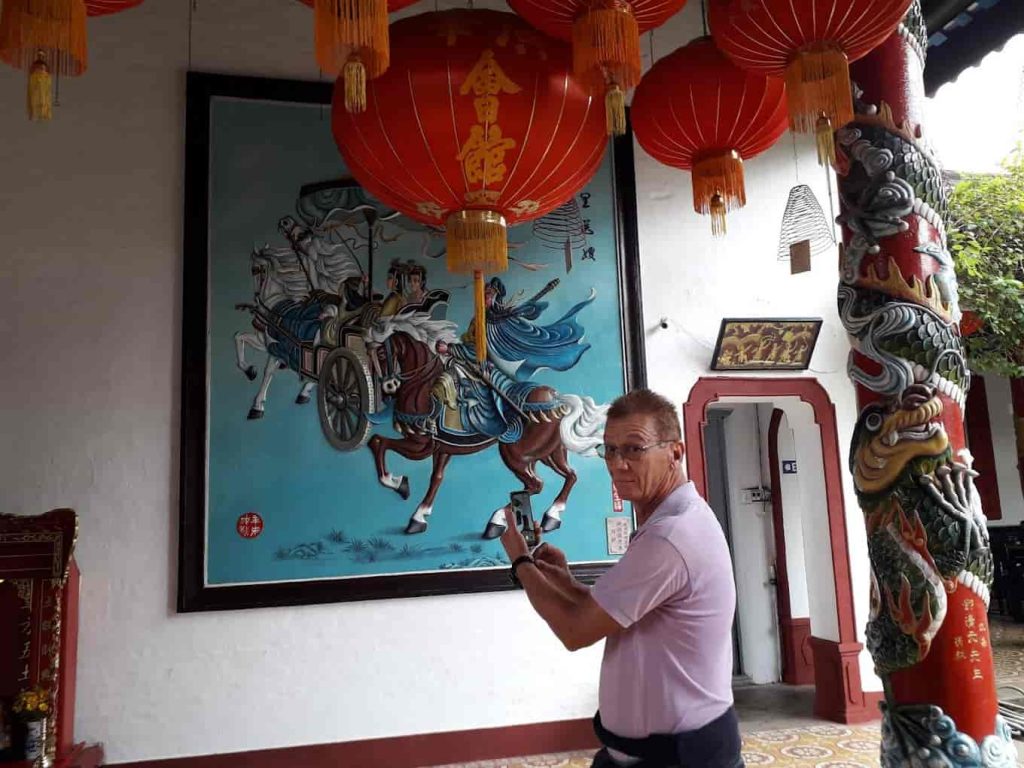
You can write your wishes on small pieces of paper and hang them on the circular incense holders in the front courtyard. Alternatively, you can also request red lucky money envelopes for blessings.
In addition to these festivals, visitors can also participate in the Ong Pagoda Vía Festival on the 16th day of the first lunar month or the Quan Hien Thanh Vía Festival on June 24th of the lunar calendar. These are major events with many unique activities.
Other non-Buddhist temples in addition to Ong Pagoda in Hoi An.
Not only Ong Pagoda, but Hoi An also has several other temples that worship deities instead of Buddha. However, all of them are famous tourist attractions that attract a large number of visitors.
Hoi An Bridge Pagoda.
Hoi An Bridge Pagoda, also known as the Japanese Covered Bridge Pagoda, is considered the iconic symbol of the ancient town. It has been recognized as a national cultural and historical monument and is featured on Vietnam’s 20,000 VND banknote.
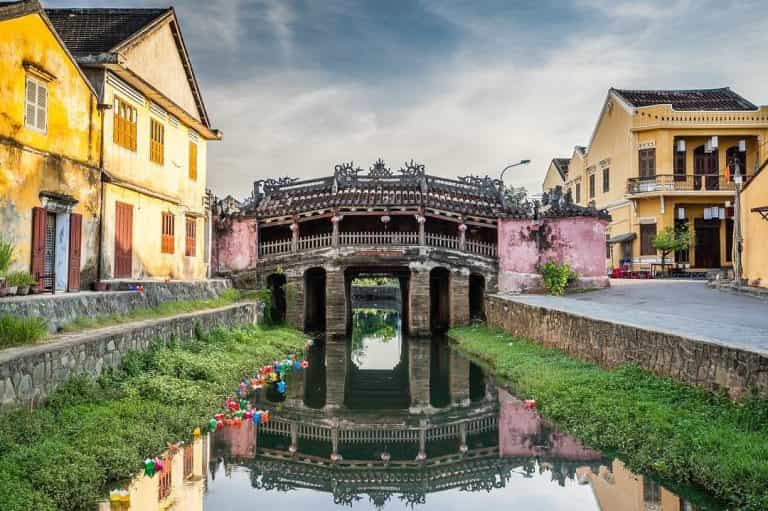
Similar to Ong Pagoda, the Bridge Pagoda does not worship Buddha but worships the deity Bac De Tran Vo. It is a place of worship for local residents, and every time visitors come to Hoi An, they visit the Bridge Pagoda to admire its beauty and take photos.
Ba Mu Pagoda.
Recently, Ba Mu Pagoda has gained popularity as a trendy check-in spot that attracts a large number of tourists, especially young people. With its ancient architecture combined with harmonious surroundings, it has become a backdrop for many million-view photos.

In addition to taking photos, visitors can also come to Ba Mu Pagoda to pray for peace and luck in business and trade. The current deities worshiped in the temple are Duc Thien Hau Holy Mother, Duc Bao Sanh Dai, and 36 other gods and goddesses.
Hotels near Ong Pagoda in Hoi An.
The following hotels near Ong Pagoda recommended by DanangPrivateCar.com are suitable for overnight stays in the ancient town. Depending on your preferences and conditions, you can choose a suitable accommodation!
- Pho Hoi 1 Hotel: 7/2 Tran Phu, Minh An, Hoi An, Quang Nam.
- Little Riverside A Luxury Hotel & Spa: 09 Phan Boi Chau, Son Phong, Hoi An, Quang Nam.
- Huy Hoang River Hotel: 73 Phan Boi Chau, Son Phong, Hoi An, Quang Nam.
- Tribee Bana Hostel: 30 Phan Boi Chau, Son Phong, Hoi An, Quang Nam.
- Casamia Hoi An Villa: 1 Le Loi, Minh An, Minh An, Hoi An, Quang Nam.
Some notes to keep in mind when visiting Ong Pagoda in Hoi An.
In addition to the information provided above by DanangPrivateCar.com, if you plan to visit this temple, please consider the following:
- Ong Pagoda is a sacred place of worship, so it is important to show respect by dressing modestly and appropriately, avoiding revealing clothing. Also, be mindful not to speak loudly or engage in disruptive behavior.
- It is important to adhere to the general regulations and not touch the artifacts or vandalize them.
- During peak times, the temple can be crowded with visitors. Take care of your belongings to avoid loss or theft.
- If you want to learn more about Ong Pagoda and its historical stories, you can hire a tour guide for around 300,000 VND per group of 8 people.
Along with other temples, Ong Pagoda in Hoi An is also a famous cultural and religious activity site, not only for locals but also for tourists. This colorful and intricately designed temple has left a strong impression on many people. Take the opportunity to visit and explore it!

